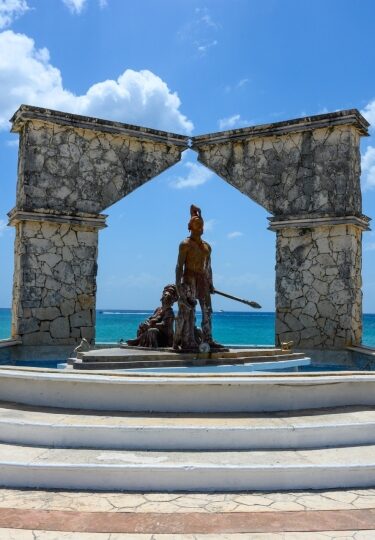The colorful island of Cozumel is laid back, peaceful, and has a feeling of authenticity about it. Beach lovers will find plenty of things to do in Cozumel, who come for the white sands and the sun.Snorkelers and divers explore the abundant reefs, part of the Great Mesoamerican Barrier Reef, the second-largest reef system in the world.
If you can tear yourself away from the beach, you could visit the only working pearl farm in the Caribbean, go on a tequila tasting tour, stroll the waterfront El Malecon, or take a day trip by air to explore Chichen Itza, the ancient Maya city-state.
Here are 24 of the best things to see and do in Cozumel.
Snorkel & Dive Cozumel Marine Park
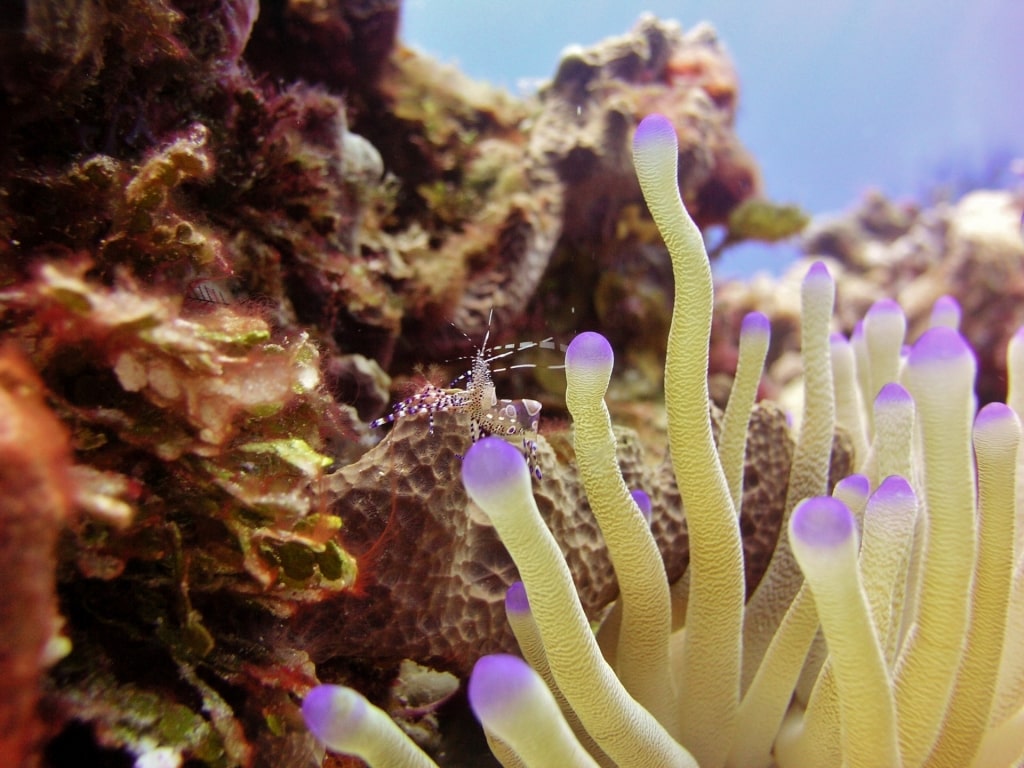
Marine life in Cozumel
Since Cozumel rates as a top snorkeling destination in the Caribbean, exploring the underwater reefs is one of the best things to do here. Stunning coral reefs, part of the largest reef system in the Western Hemisphere dazzle snorkelers and divers.
In 1996, the Mexican government created Cozumel Reefs National Park, a 30,000-acre reserve that includes 85 percent of the island’s dive sites.
The crystal clear waters push visibility to 150 feet in places, and at other sites, the reefs beckon snorkelers with fans, sponges, and rainbow-colored fish schooling just a few feet below the surface.
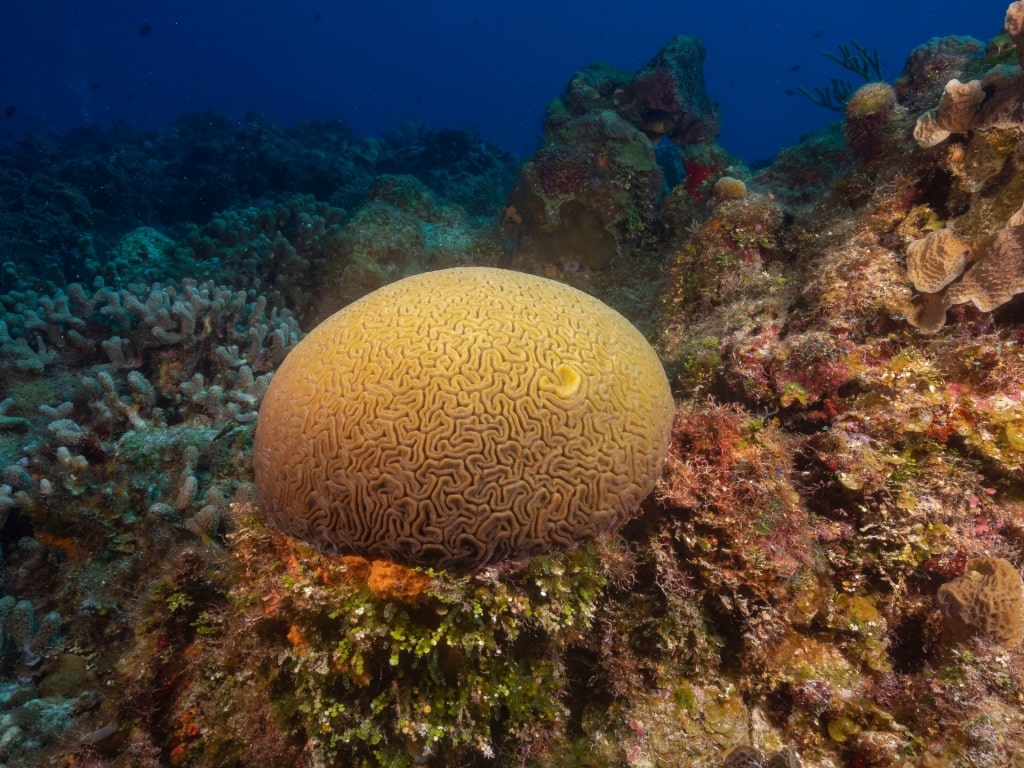
Brain coral
Divers admire the boulder-sized gardens of brain coral and the black coral trees shooting to nearly 25 feet, as well as grouper, moray eels, nurse sharks, and sea turtles.
The water is clear and the marine life abundant, making it one of the best scuba diving spots in the Caribbean.
Take in Downtown San Miguel
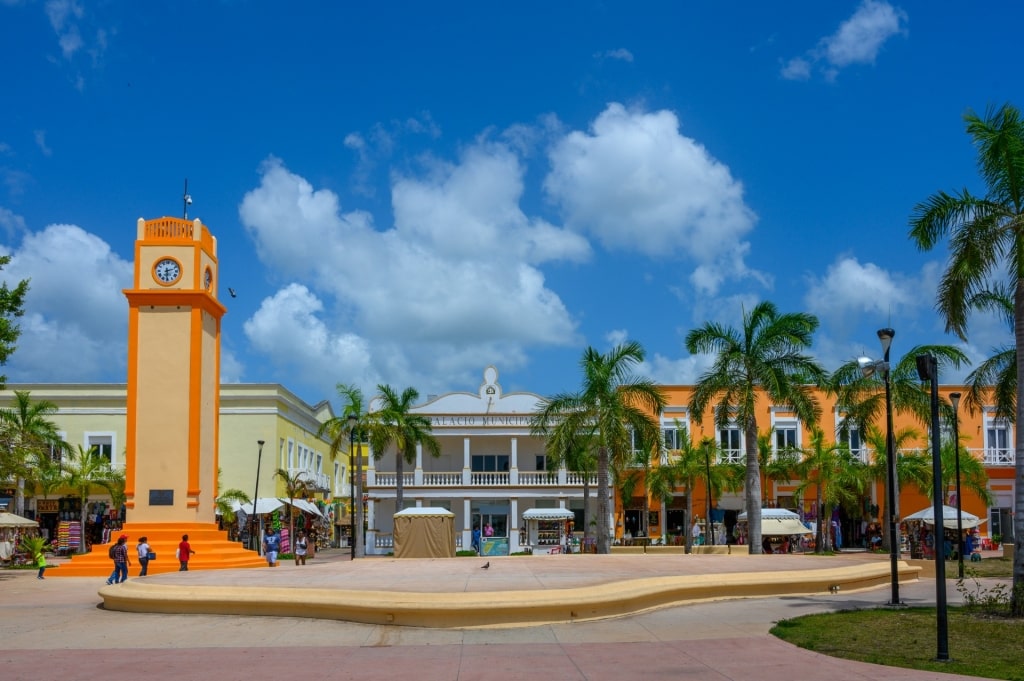
Downtown San Miguel
Vibrant San Miguel, the largest town in Cozumel, is a mix of Mexican culture and Caribbean flair. Exploring the downtown area is one of the best things to do in Cozumel as you while away a morning before heading to the beach.
At El Mercado, the island’s traditional market, produce stalls are piled high with papayas, bananas, and pineapples. Vendors sell fresh-squeezed orange and grapefruit juice, and slabs of pork and beef hang from hooks.
At the eateries in the market, try fish stew, tacos, empanadas, and other authentic dishes.
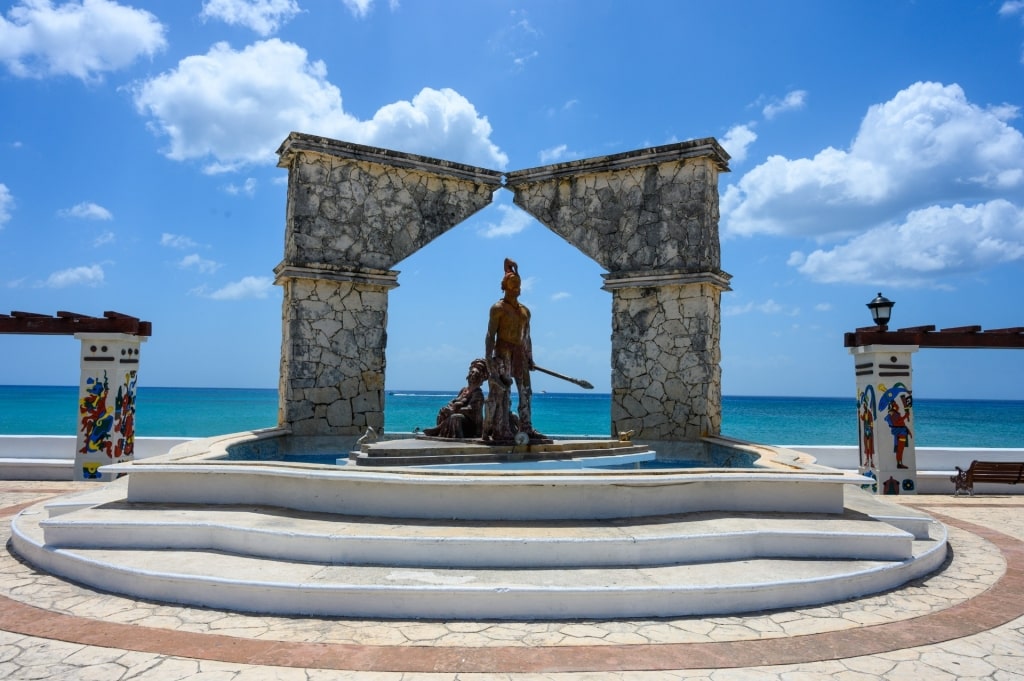
El Malecon, Downtown San Miguel
On a stroll along San Miguel’s waterfront strip, El Malecon, officially the Avenida Rafael E. Melgar, you can feel the sea breezes and almost taste the salty air. Sculptures of eagles, dolphins, fish and other critters enliven the broad sidewalk.
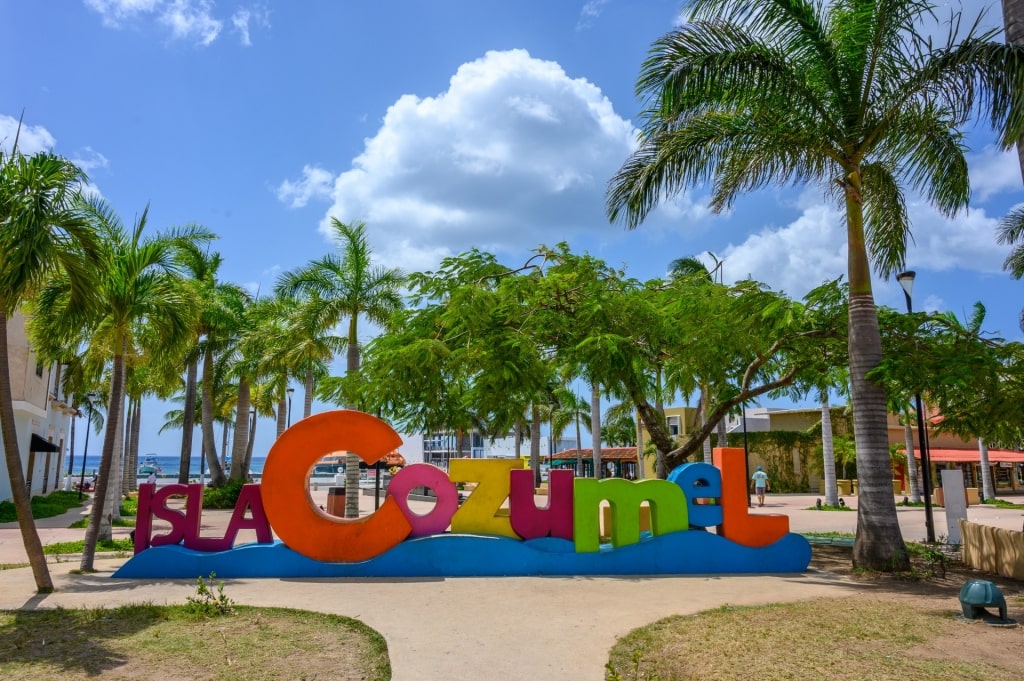
Downtown San Miguel
The iconic and colorful Isla Cozumel sign graces Benito Juarez Park, a good place to pause on a shaded bench before shopping in Cozumel. Keep an eye out for the town’s vivid murals as you search for take-home treasures.
Shop after shop sells pottery, paper maché fruit, wood carvings, brightly colored hammocks and silver bracelets, necklaces, rings, serving pieces, and pitchers. Browse, bargain, and then bargain some more.
Go Snorkeling at Chankanaab Beach Adventure Park
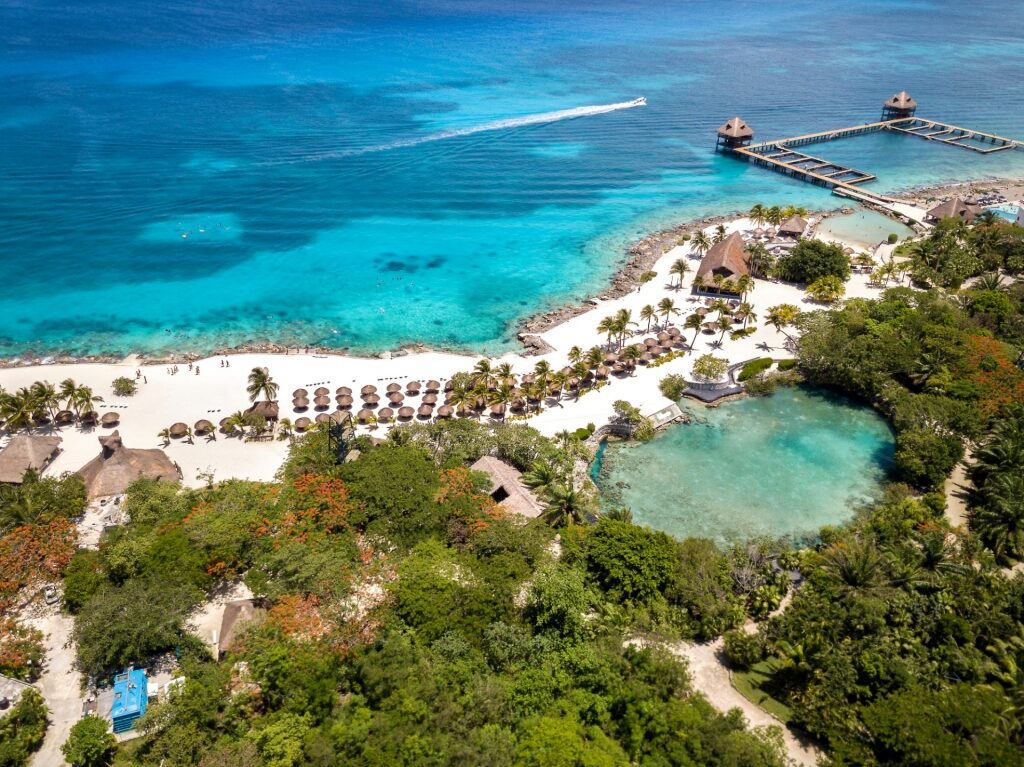
Chankanaab Beach Adventure Park
Popular Chankanaab Beach Adventure Park lures visitors with its sea life. “Chankanaab” means “little ocean” in the Mayan language. The beach park lies within Cozumel Reefs National Marine Park.
On a snorkel or dive, you float among grunts, snappers, and other schools of rainbow-colored beauties and can admire the Christ of the Abyss statue, a Chankanaab landmark.
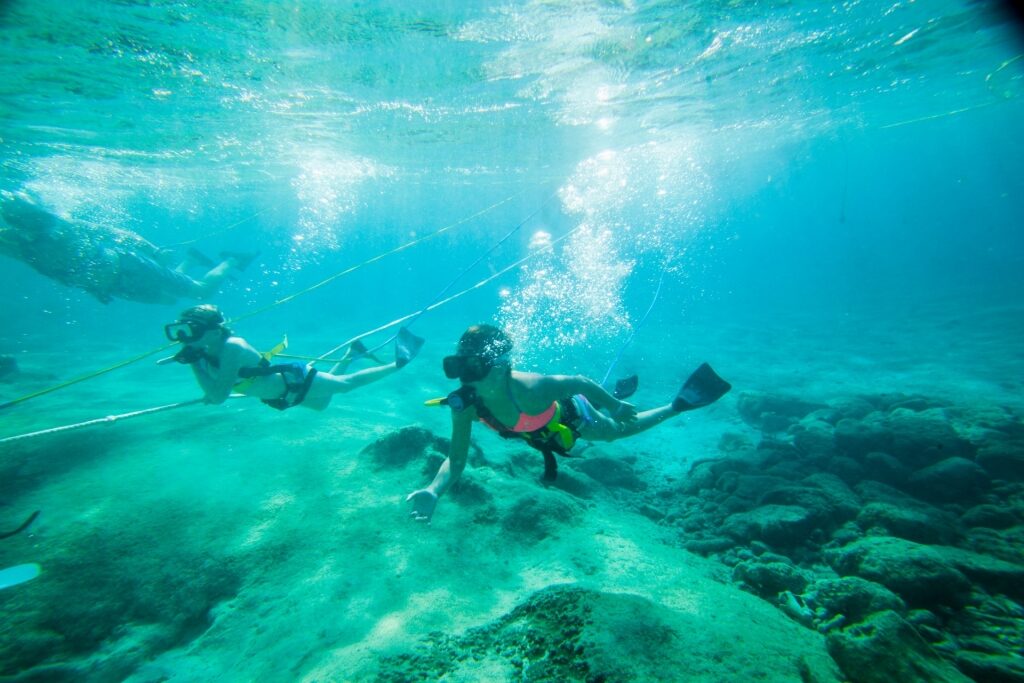
Snuba adventure in Chankanaab Beach Adventure Park
Even non-divers can savor underwater views with SeaTrek or Snuba, experiences that use floating oxygen tanks or helmets pumped with compressed air. You can also swim with gentle manatees and interact with dolphins.
Out of the water, meander through a tropical garden dotted with re-created Mayan structures and glide on a zipline.
Swim, Sun, and Play at Playa Mia Grand Beach Park
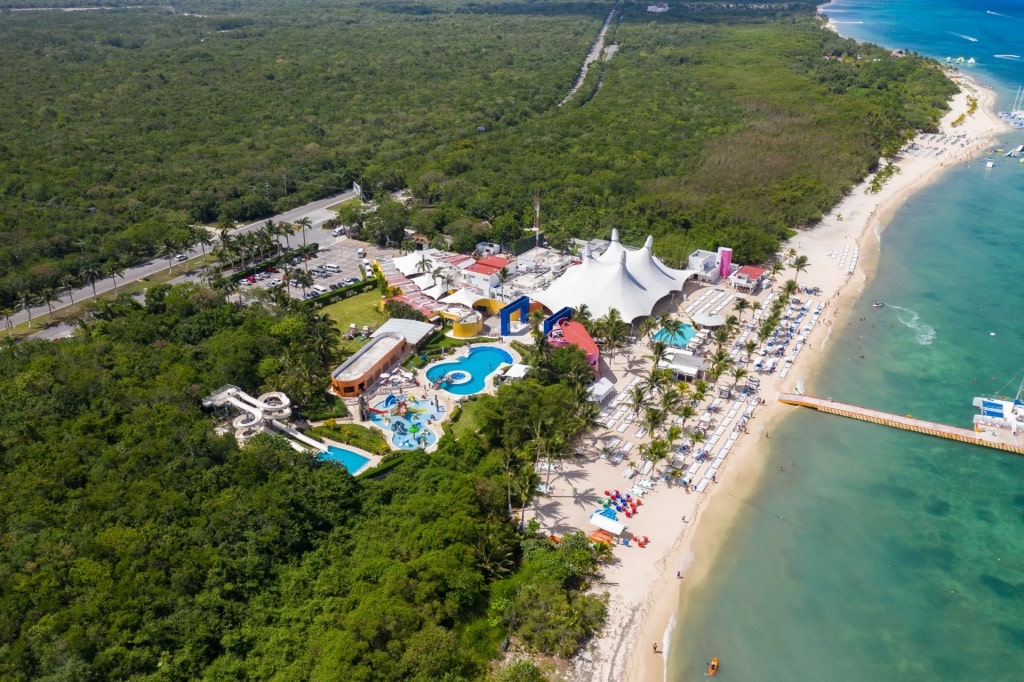
Playa Mia Grand Beach Park
Mexican beach parks entice you with their one-stop approach to sun, sand, and sea. At Playa Mia Grand Beach Park, one of the best beaches to visit in Cozumel, bring your towel, find your lounge chair, and relax under the Caribbean sunshine.
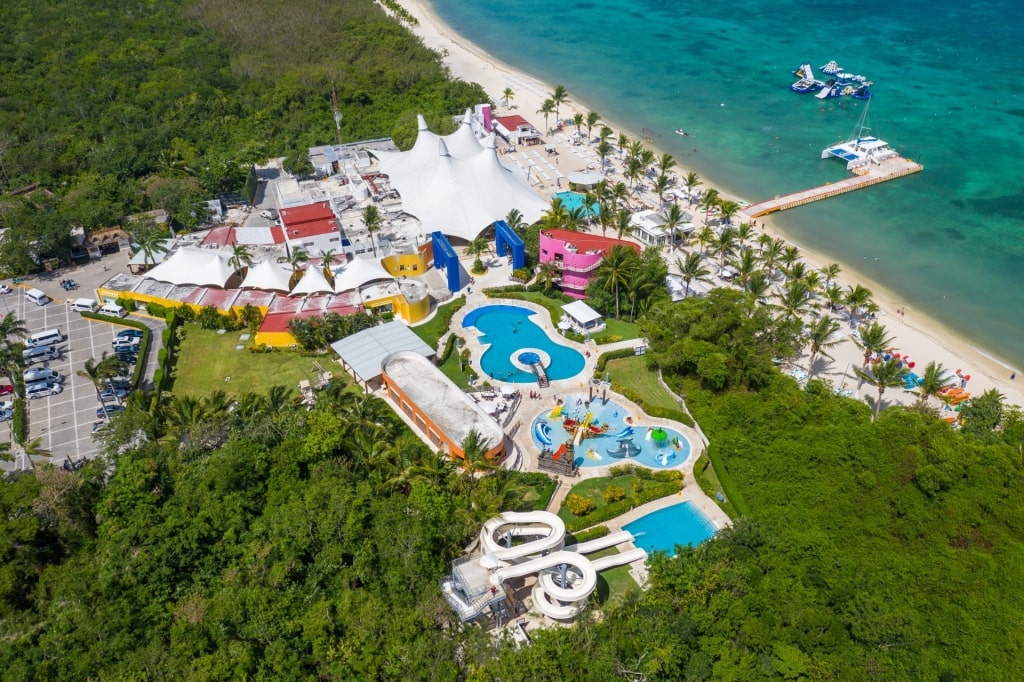
Playa Mia Grand Beach Park
You’ll find kayaks, water trikes, and twisting water slides here. Up the excitement with parasailing, wave runners, snorkeling, and signing up for salsa dancing and salsa making. Make a day of it by adding lunch.
Because of the sea’s constant current—two to four knots northward – a relaxing drift dive or snorkel tour from a boat lets you see more because you don’t need to swim back to the shore or kick against the often substantial Cozumel currents. Consider a two-stop drift tour to Palancar Reef and Colombia Reef.
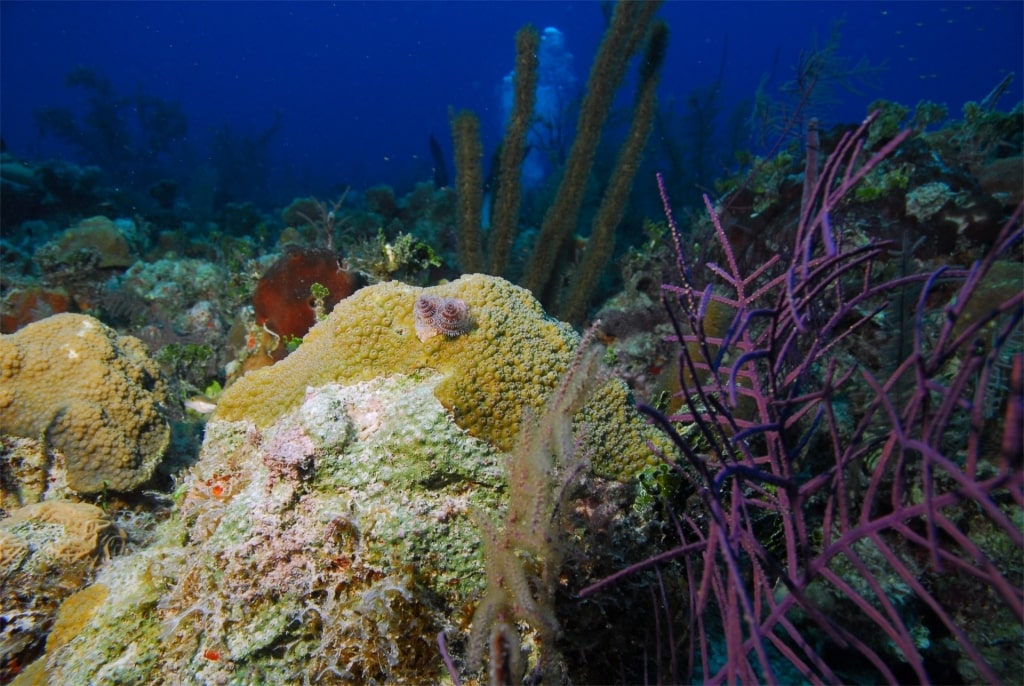
Palancar Reef
A Cozumel legend, Palancar Reef, more than three miles long, rewards mask and fin enthusiasts with large coral heads, barrel sponges, and sea fans. At Colombia Reef, look for turtles, damselfish, and grouper; in terms of natural beauty, this is one of the best things to see in Cozumel.
Explore Punta Sur Eco Beach Park
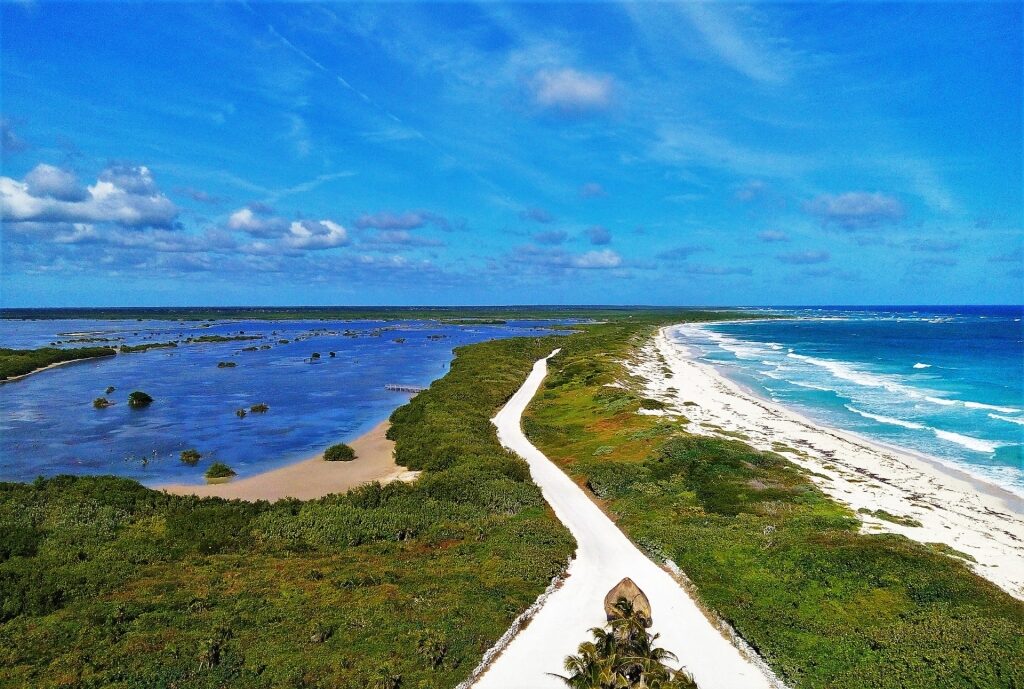
Punta Sur Eco Beach Park
Located at the southern tip of Cozumel, this 247-acre park, established in 1999, protects the sandy shores and mangroves and serves as a refuge for turtles, fish, alligators, birds, and beach lovers.
Dense groves of sea grapes and stands of palms line some roads. Because of the park’s size, it’s best to arrive by car or on a guided tour.
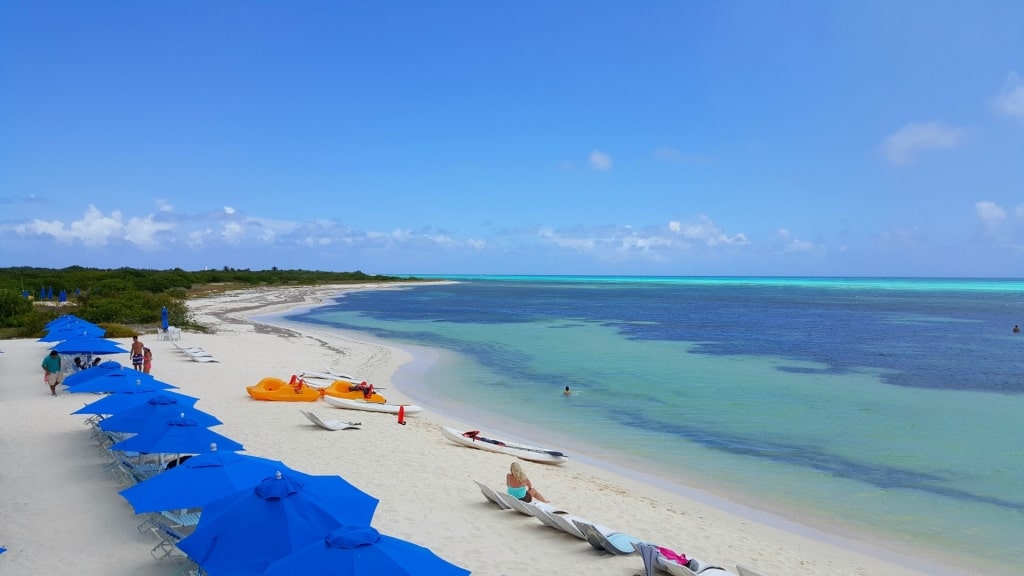
Punta Sur Eco Beach Park
The less-visited beaches farthest from Punta Sur’s entrance are the most pristine. At these beaches and others in the park, enjoy listening to breaking surf, watching a phalanx of sea birds fly overhead, and strolling the shore.
Resist the urge to swim because in many places Punta Sur’s sea can have strong currents and waves. It’s best to swim where officials say it’s safe and to snorkel with a guide who can lead you to the calmest waters.
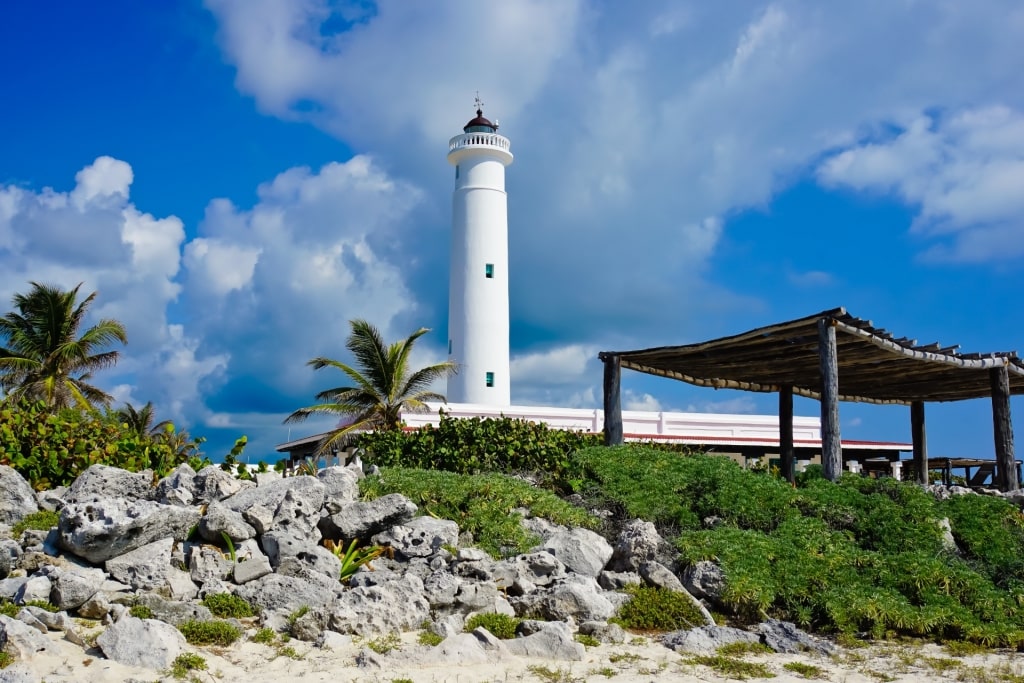
Punta Sur Eco Beach Park
Punta Sur is also home to flamingos, herons, and spoonbills, which may be seen from an observation tower. To catch sight of the alligators, walk a boardwalk trail over a lagoon.
For panoramic park views, climb the 133 winding steps of the 19th-century lighthouse.
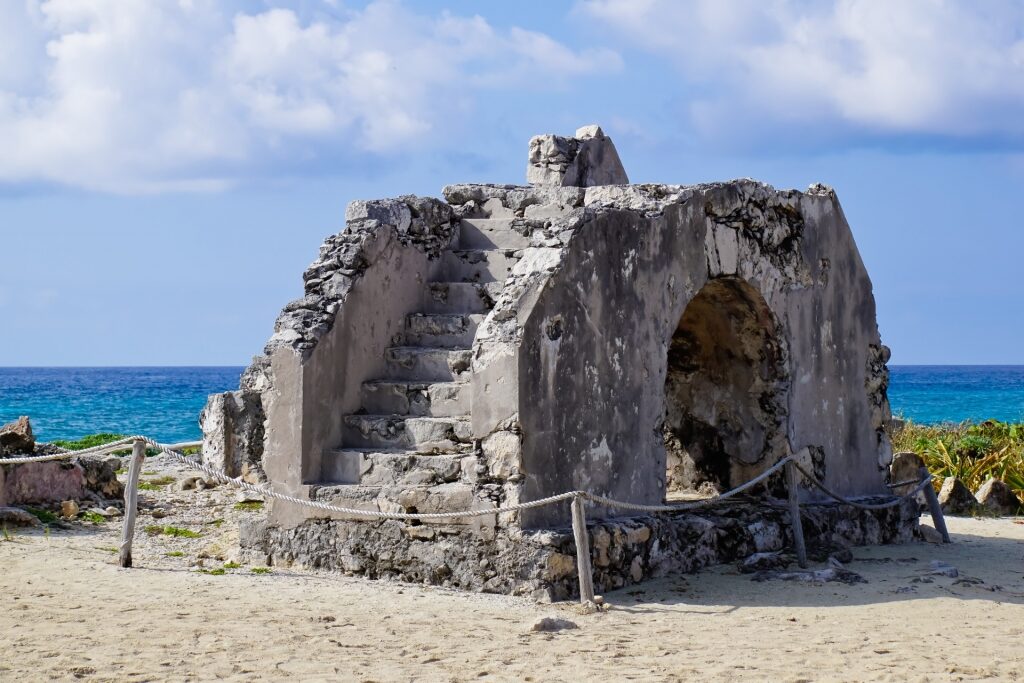
Punta Sur Eco Beach Park
Several Mayan ruins dot the park, including El Caracol, cleverly constructed with shells. According to legend, the whistling noise of the vibrating shells due to high winds warned people of an impending hurricane.
Learn the History of Chocolate
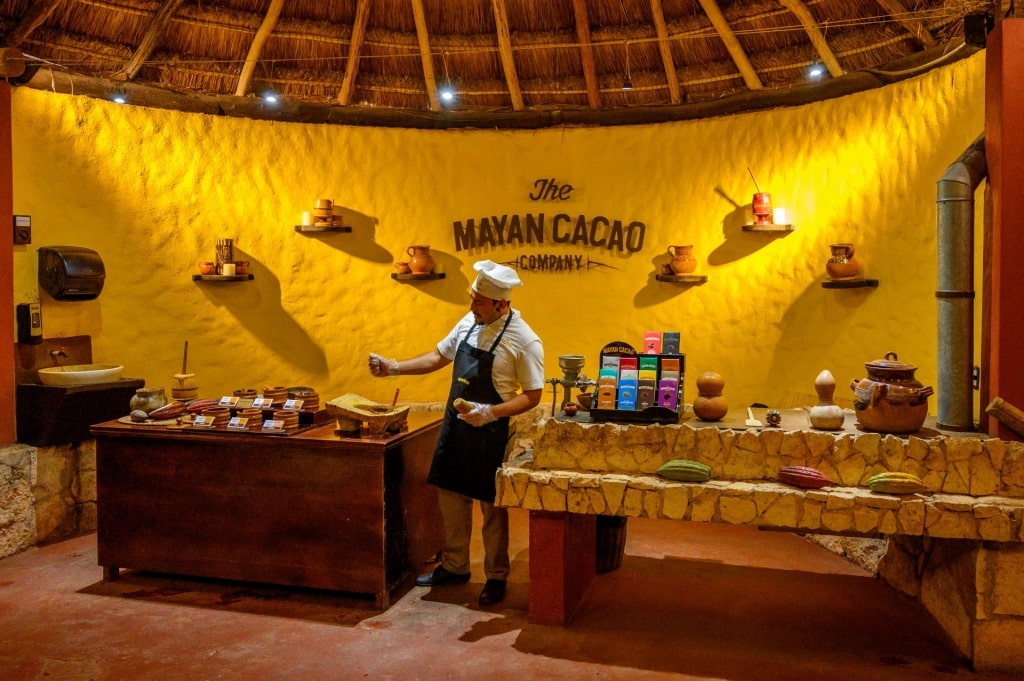
Mayan Cacao Company
At the Mayan Cacao Company, discover the Mayans’ fascination with chocolate. Learn how the Mayans used cacao beans to create chocolate and how their version differs from what we delightfully devour.
After picking, grinding, and mixing cacao with chili and, sometimes, honey, the Mayans served the rather bitter drink cold to priests and royalty, the only ones allowed to enjoy the caffeinated kick.
Nowadays, you can get hands-on by using a metate, the tool used by the Mayans, to grind and mix ingredients, creating your own Mayan-style chocolate bar.
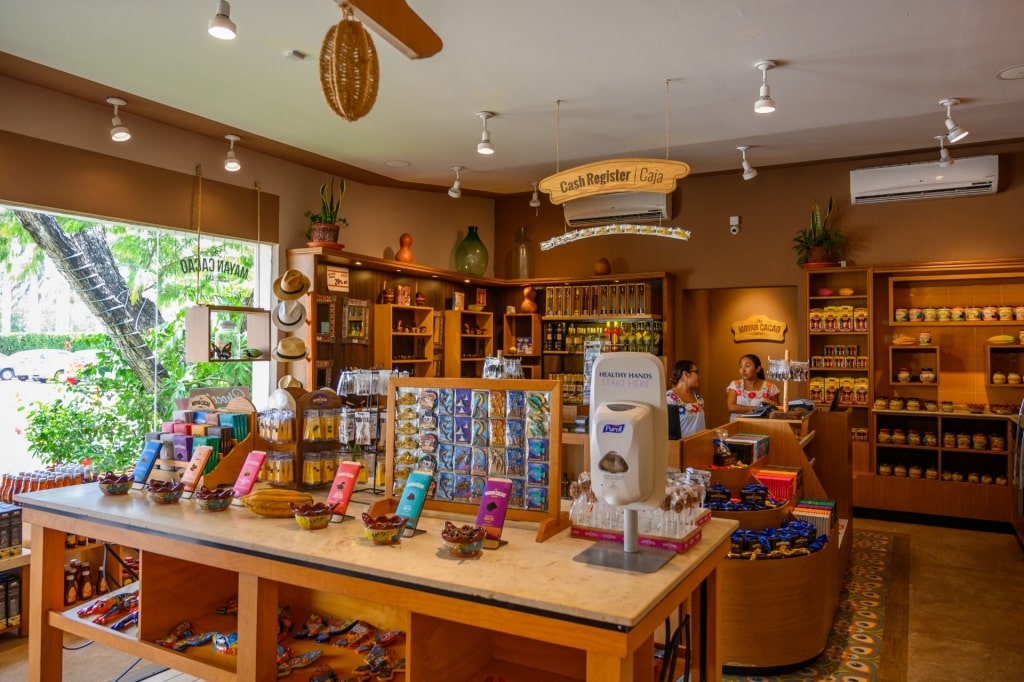
Mayan Cacao Company gift shop
Go modern by concocting a chocolate margarita. Chocoholics can stock up on chocolate bars, chocolate bath soaps, and chocolate lotions at the gift shop.
Stand Among Starfish at El Cielo
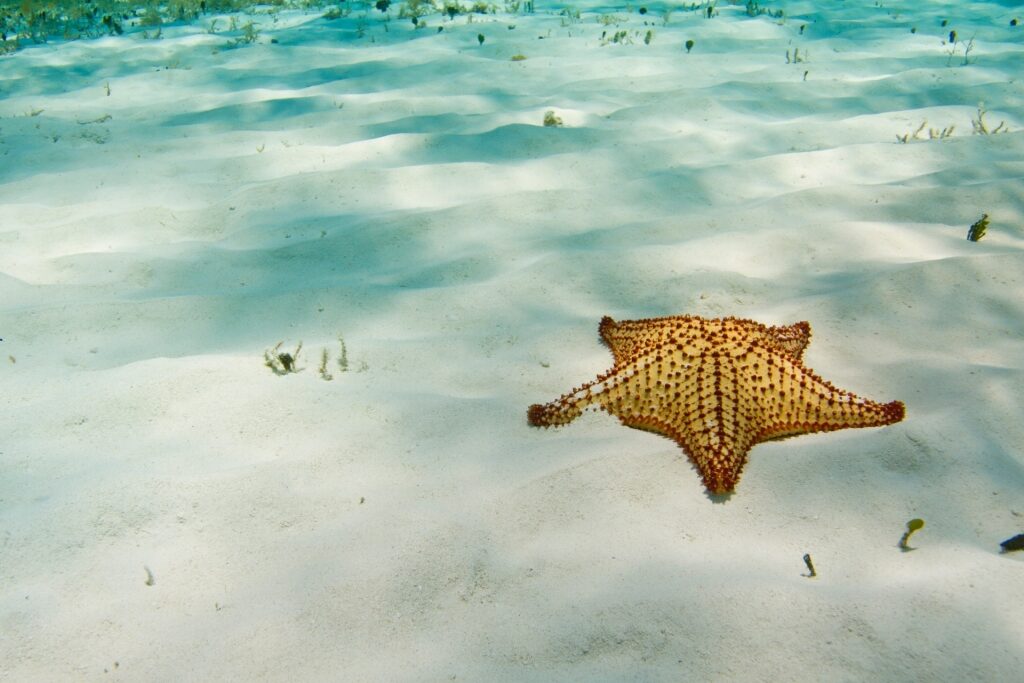
El Cielo
“El Cielo” means “heaven” Reachable only by boat, El Cielo isn’t a beach, but a sandbar covered in waist-high water. On an outing, turquoise seas and blue skies surround you, creating a feeling of boundlessness.
Although no one truly knows the derivation of the site’s name, a local theory has it that the many starfish scattered across the underwater sand reminded early visitors of stars in the sky, so the site became known as El Cielo.
El Cielo is a peaceful place, especially when few boats arrive. The fluttering you might feel at your feet are the stingrays gracefully flapping their wing-like fins as they float by.
Spend a Beach Day at Playa Palancar
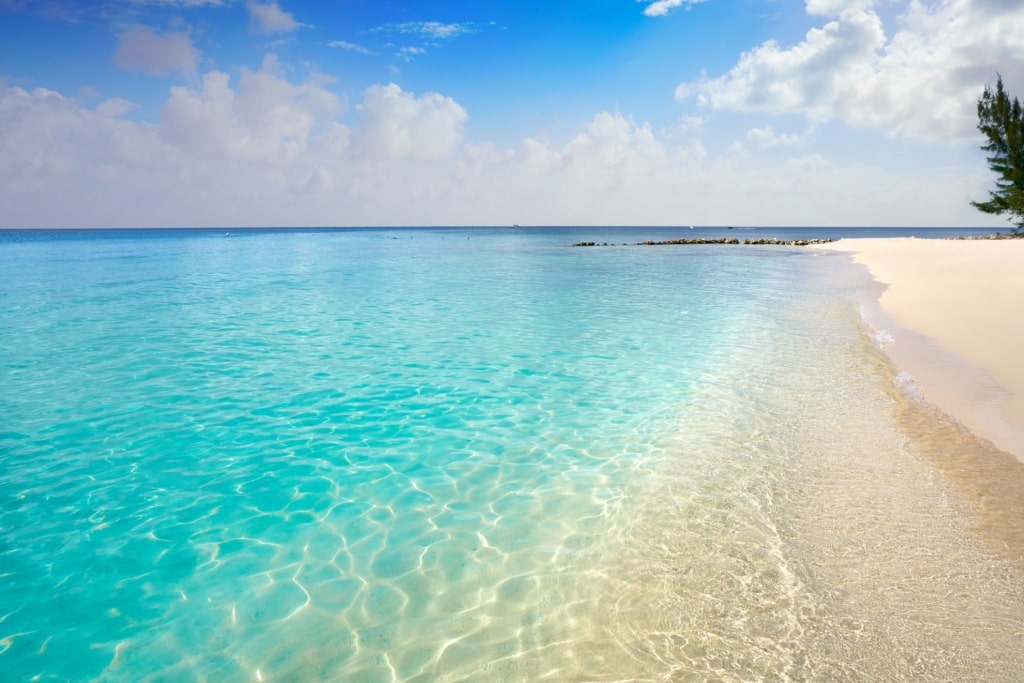
Playa Palancar
Playa Palancar, a public beach, is a white sand ribbon on Cozumel’s southwest coast. A drink from the bar, a plate from the restaurant, or a reservation for parasailing, jet skiing, diving, or snorkeling entitles you to a lounge chair.
From the beach, it’s a 20-minute boat ride to Colombia or Palancar reefs, iconic Cozumel snorkeling and diving sites known for their schooling fish and brilliant corals.
Take a Reef Tour with Atlantis Submarine
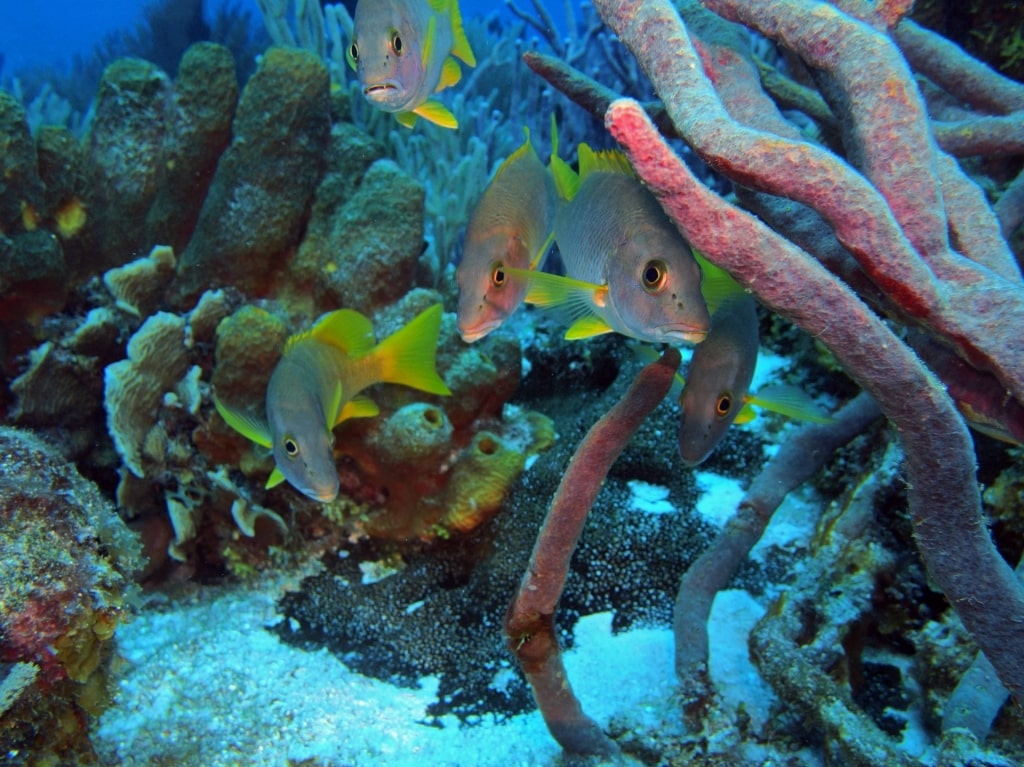
Snappers
Go below on an Atlantis Submarine to experience a diver’s eye view of the deep without getting wet, learning scuba, or even knowing how to swim. Diving with the Atlantis Submarine is one of the best things to do in Cozumel as you’ll descend far deeper than you would on a dive, down to 100 feet.
You should see snappers, manta rays, schools of rainbow-colored fish, and maybe even a turtle swimming past the portholes. At Chankanaab Reef, you also see the sunken wreck, the Felipe Xicotencatl, resting at a depth of 50 feet.
Marvel at Chichén Itzá
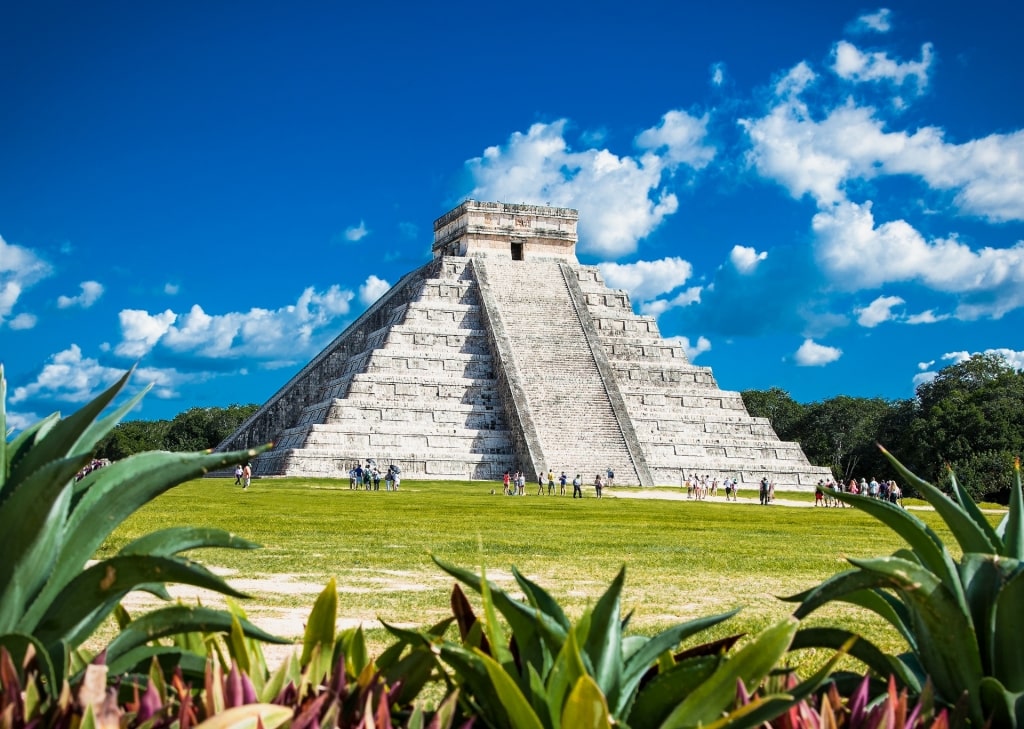
Chichén Itzá
Your adventure to Chichén Itzá, an impressive city-state built by the Mayans, begins with a flight over the Yucatán Peninsula. Taking a plane to the ancient city makes visiting the site, an impressive Maya ruin and a UNESCO World Heritage Site, a feasible day trip from Cozumel.
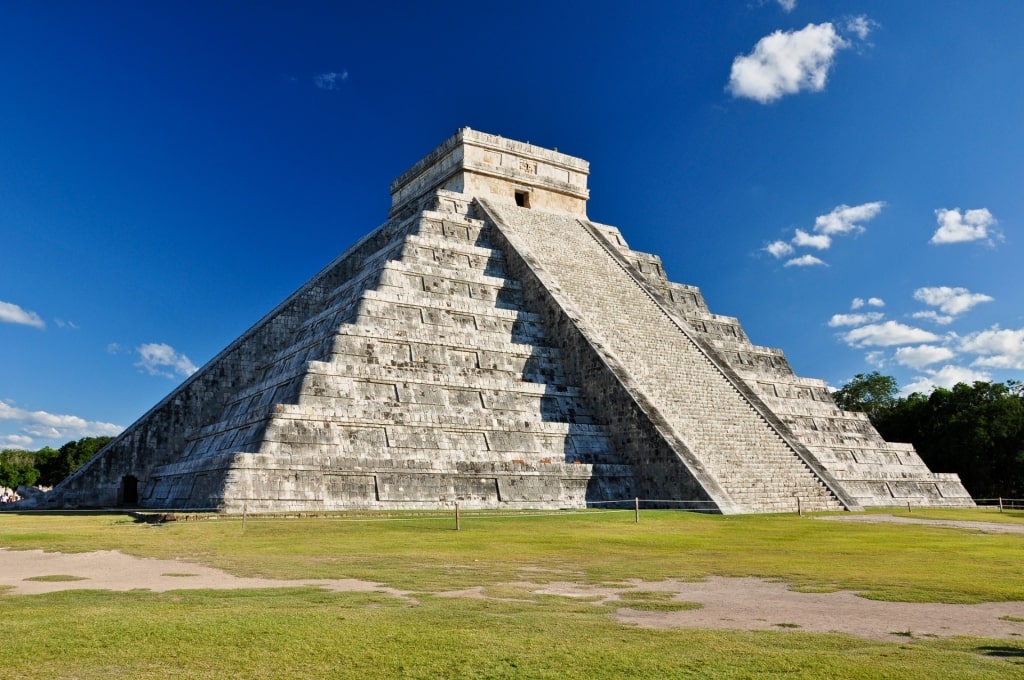
Chichén Itzá
Chichén Itzá rates as one of the New Seven Wonders of the World. On a walk through the four-square-mile site of this ancient city-state, you time travel back to 600-1200 C.E. to learn about the Maya.
Skilled mathematicians and astronomers, the Maya built many of the 40 or so excavated or semi-excavated structures to use in sacred ceremonies, tell the time, and celebrate the seasons.
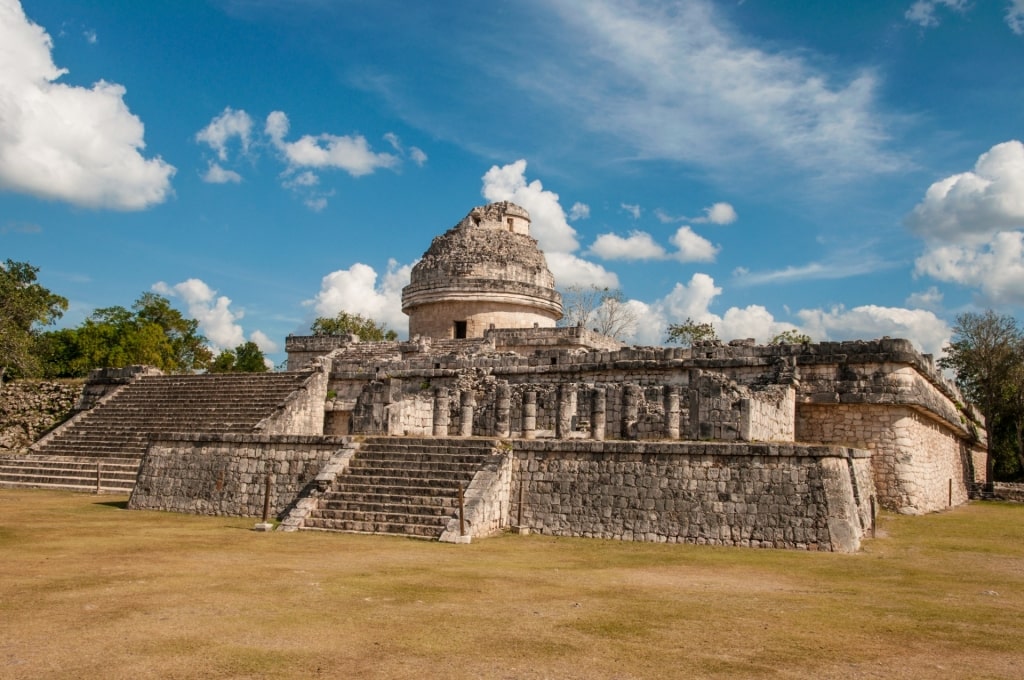
El Caracol, Chichén Itzá
El Castillo, the massive, 79-foot tall, pyramidal temple has a total of 365 steps, the same number as the solar calendar.
On the spring and fall equinoxes, sunlight hits El Castillo’s steps in such a manner that it appears that a shadow is slithering down the staircase to join up with a large sculpted serpent head at the structure’s base.
Each of the four windows in El Caracol, a circular tower used as an observatory, faces a cardinal direction.
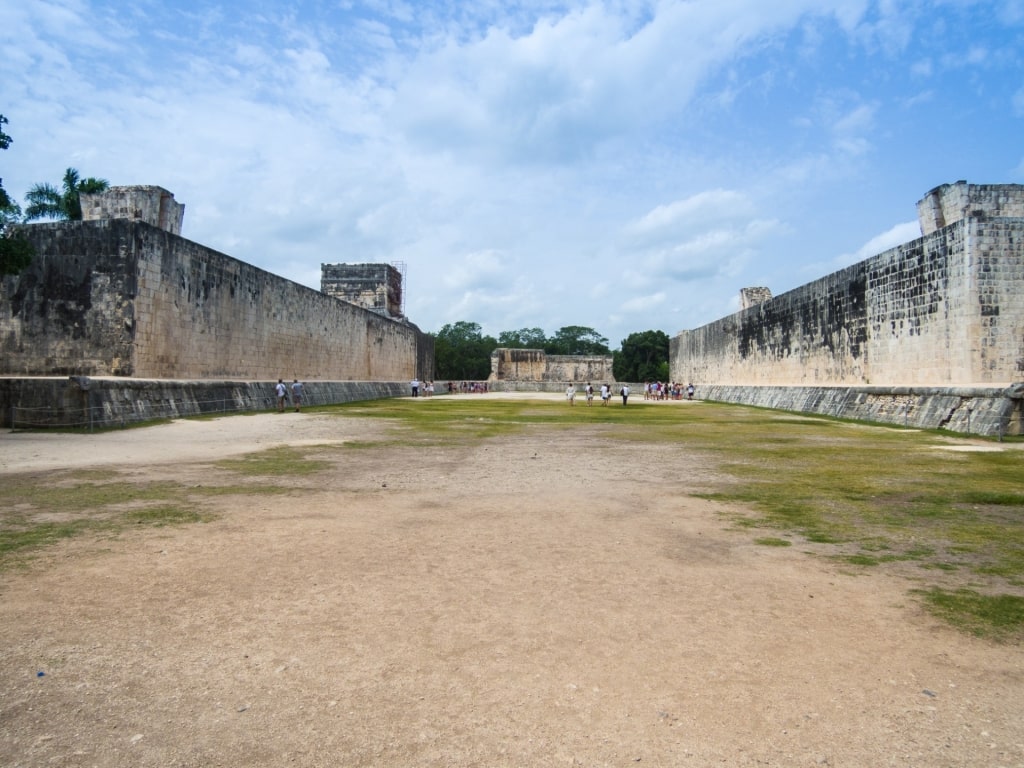
Principal Ball Court Photo by dronepicr on Flickr, licensed under CC BY 2.0
Another highlight, Juego de Pelota Principal, the Principal Ball Court, is the largest ancient ball court in any of Mexico’s archeological sites. Players used their hips to maneuver the ball.
Although no one knows the rules of Pok Ta’ Pok, historians think that getting the ball through a stone loop gained a player bonus points but was not the game’s objective.
The game could be deadly. Friezes on the ballcourt’s wall depict sacrifices, probably that of the losing captives who had been forced to play. That’s just part of the mystery surrounding the city and its decline.
Exploring Chichen Itza is fascinating. Be sure to wear a hat and bring several water bottles as it’s hot in the jungle.
Go Tequila Tasting
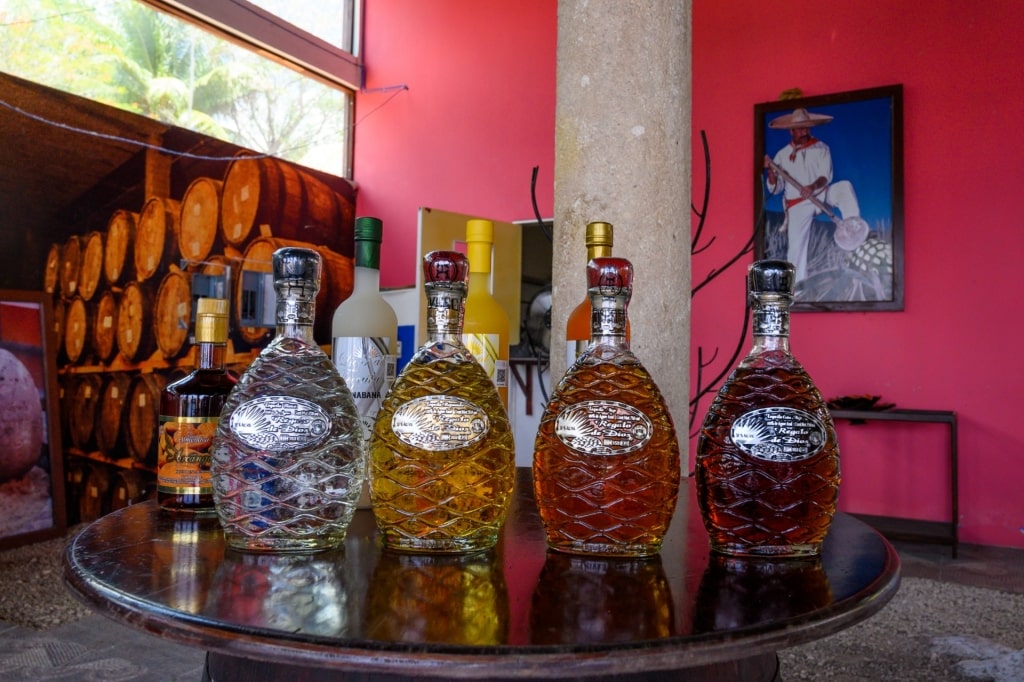
Tequila
On a tequila tasting tour, find out about the history of tequila, a centuries-old drink that Mexico is known for, from the Aztecs’ fermentation of agave to produce “pulque” to Mexico’s 1974 registered ownership of the term “tequila.”
Tequila is officially produced in only five regions of Mexico: Michoacan, Guanajuato, Nayarit, Tamaulipas, and Jalisco, where the town of Tequila is located. Anything produced outside those regions cannot legally be labeled tequila.
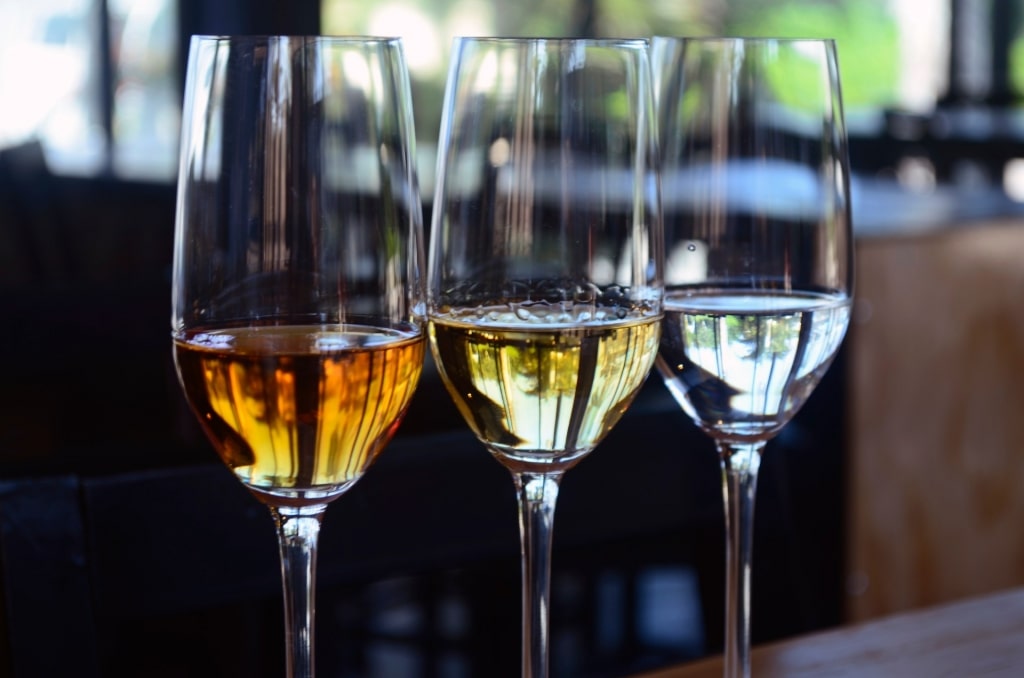
Tequila tasting
Guided by your master tequilero, you’ll taste the differences among three basic tequilas: undiluted Blanco, Reposado aged in oak barrels for two to 12 months, and Anejo, aged in oak barrels for one to three years.
The tequilero also reveals the secret to making the best margaritas, one of the most popular Caribbean cocktails.
See How Pearls Form
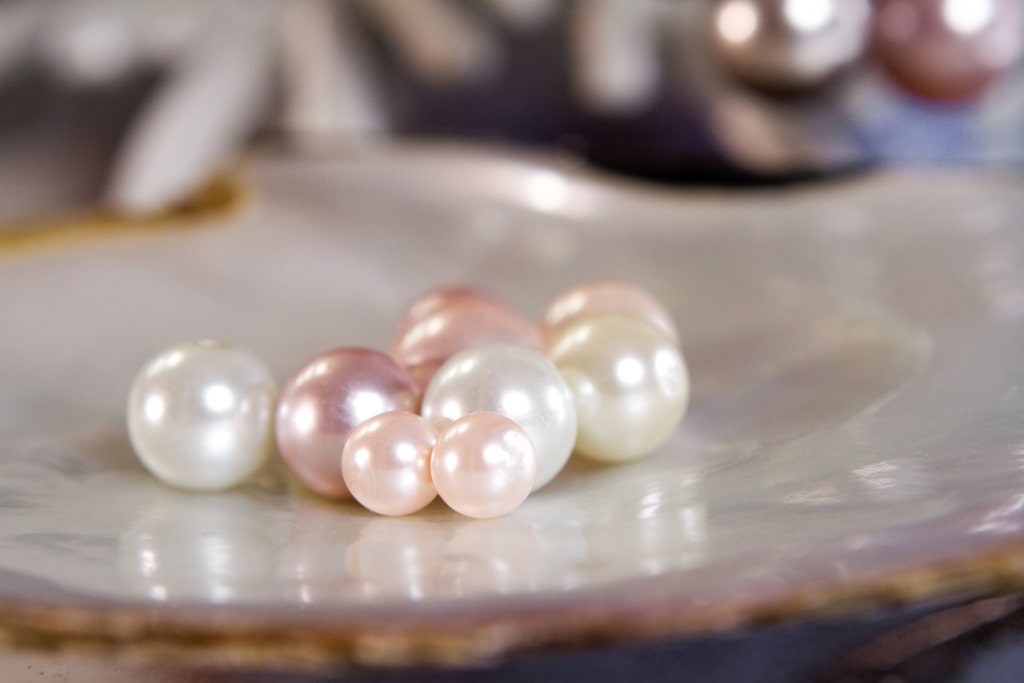
Pearl
Pearl necklaces have long connoted elevated social status. Martha Washington wore one, as did Jacqueline Kennedy, and Michelle Obama. The three-strand pearl necklace Queen Elizabeth II wears so frequently has come to serve as her signature adornment.
Find out how the prized iridescent spheres are cultivated at the family-owned Cozumel Pearl Farm, the only active pearl farm in the Caribbean. A guide explains the process and why the farm uses the oyster Pinctada radiata, a.k.a. the Atlantic Pearl Oyster, a species almost extinct in the region before the farm cultivated it.
Afterward, you can snorkel above the oyster beds, walk on the pristine, white sand beach, and enjoy a grilled Caribbean lunch. Tours are limited to about eight people, something else that makes the experience special.
Have a Maya Encounter at San Gervasio
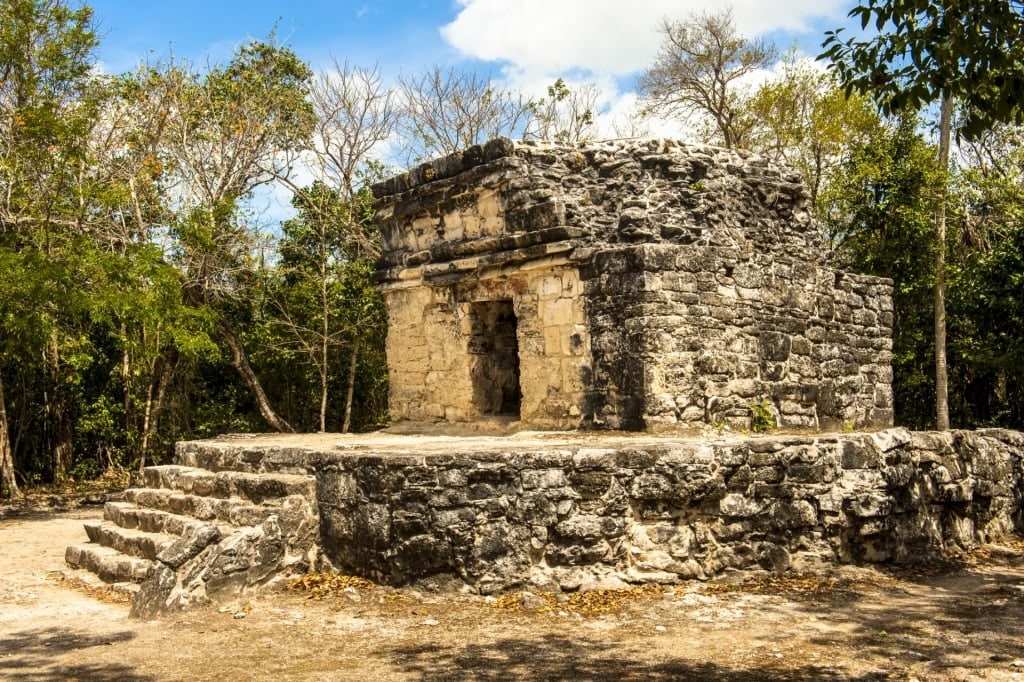
San Gervasio
If you don’t have the time to go to Chichen Itza, San Gervasio is a much more intimate Maya site actually on Cozumel. Its pyramid, temples and other buildings mark it as perhaps one of the most important pilgrimage sites in Central America after Chichen Itza.
At its height during the post-classic period from 1200-1530 C.E., San Gervasio has a central plaza where several Maya roads meet. Sadly, the arrival of the Spanish in 1518 brought smallpox that wiped out much of the population.
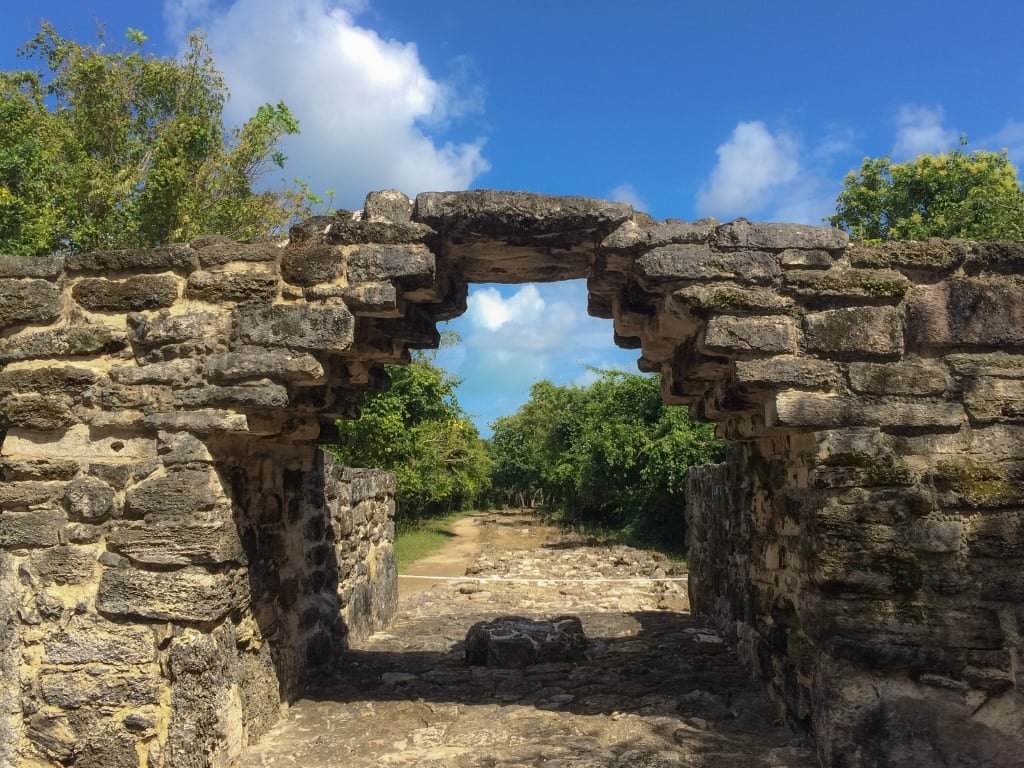
San Gervasio
The Spanish noted that San Gervasio was dedicated to the Mayan deity Ixchel, a jaguar Goddess of childbirth and fertility. That made the site particularly significant to Maya women.
Major buildings include Las Manitas (“The Little Hands”), where the walls are covered in handprints. Nohoch Na (often called “The Palace”) once had a temple on top that was painted in bright blues, yellows and reds.
Learn to Make Tacos
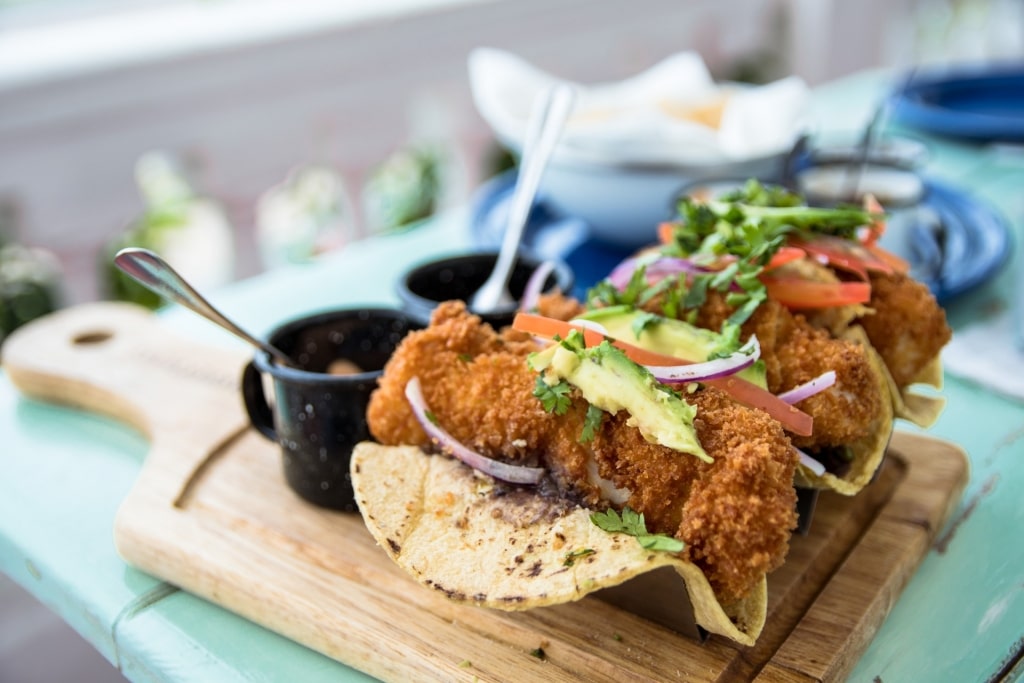
Tacos
Create everlasting memories of Mexico by bringing home an authentic taste. While cookery classes on Cozumel cover a range from authentic Maya dishes to Mexican home cooking, a Taco workshop is among the simplest, and most fun.
A taco is a tortilla that is folded around a filling of meat, and/or vegetables, usually eaten in the hand. Like many simple things, it takes some skill to do very well.
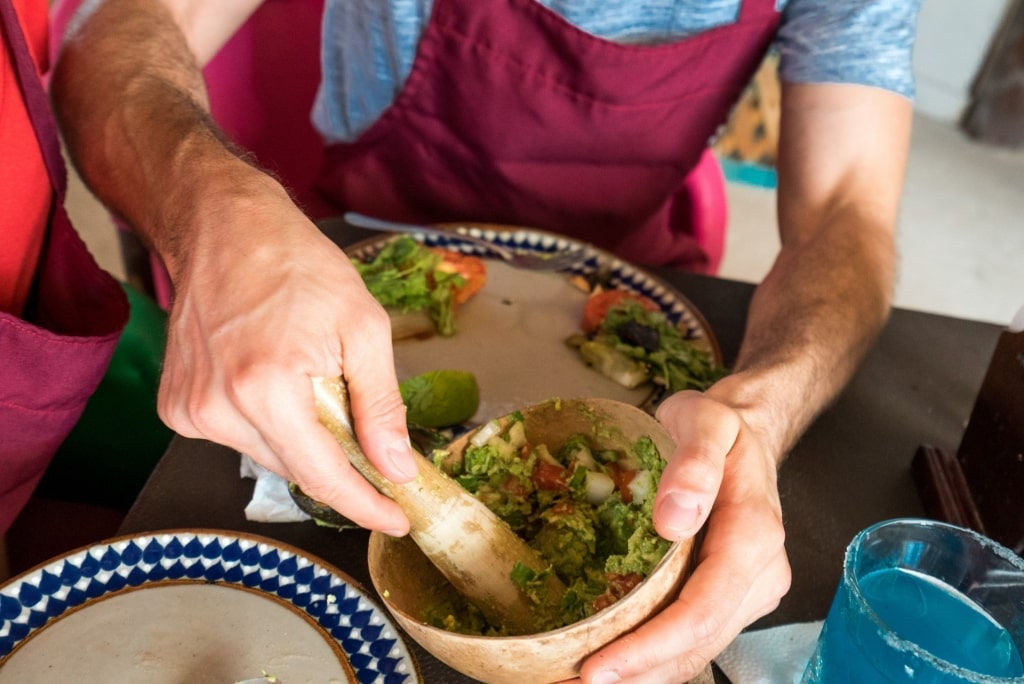
Guacamole
From choosing the right corn tortillas to making the perfect salsa and guacamole, a professional chef can help you through the basics, then progress to the next level. The best part is that you get to make, and eat, your own creations.
You can find workshops that pair gourmet tacos with tequilas, or more casual affairs on a beach with a boat tour. Whichever you choose, an entertaining, and delicious time is assured.
Escape to Isla Pasion
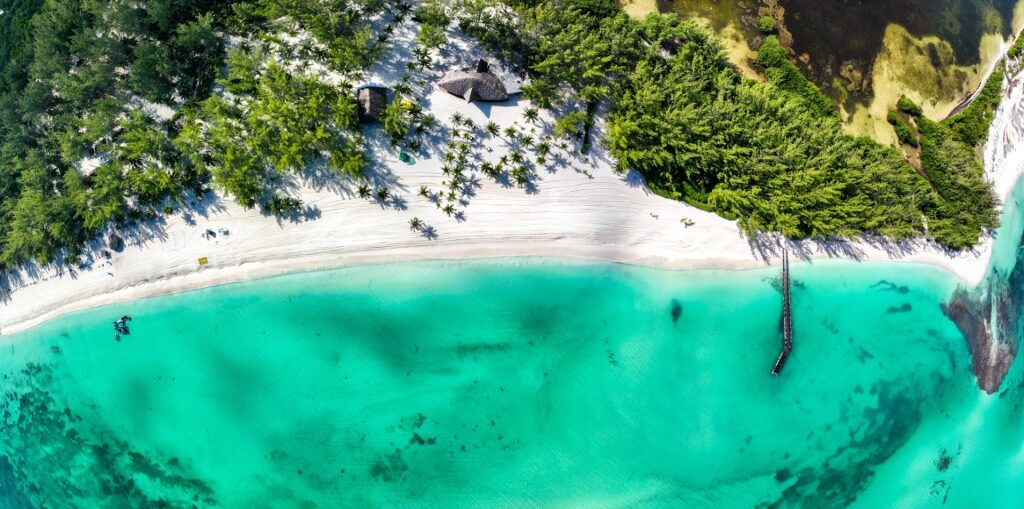
Isla Pasion
This tiny, palm-covered island, a short boat ride from Cozumel’s shore, is a real taste of Caribbean paradise. Popular for weddings (there’s a small chapel), you’ll understand why when you see its romantic beauty for yourself.
The white sands are perfect for a stroll while you pick the right spot to chill in a hammock with a cold beer or cocktail. Kayaks, water bikes and paddle boards let you explore further afield.
However, most visitors to this exclusive spot just relax and take it all in. Lunch, or the beautifully clear water, are the only things that might tempt you out of that hammock.
Discover Cozumel Island Museum
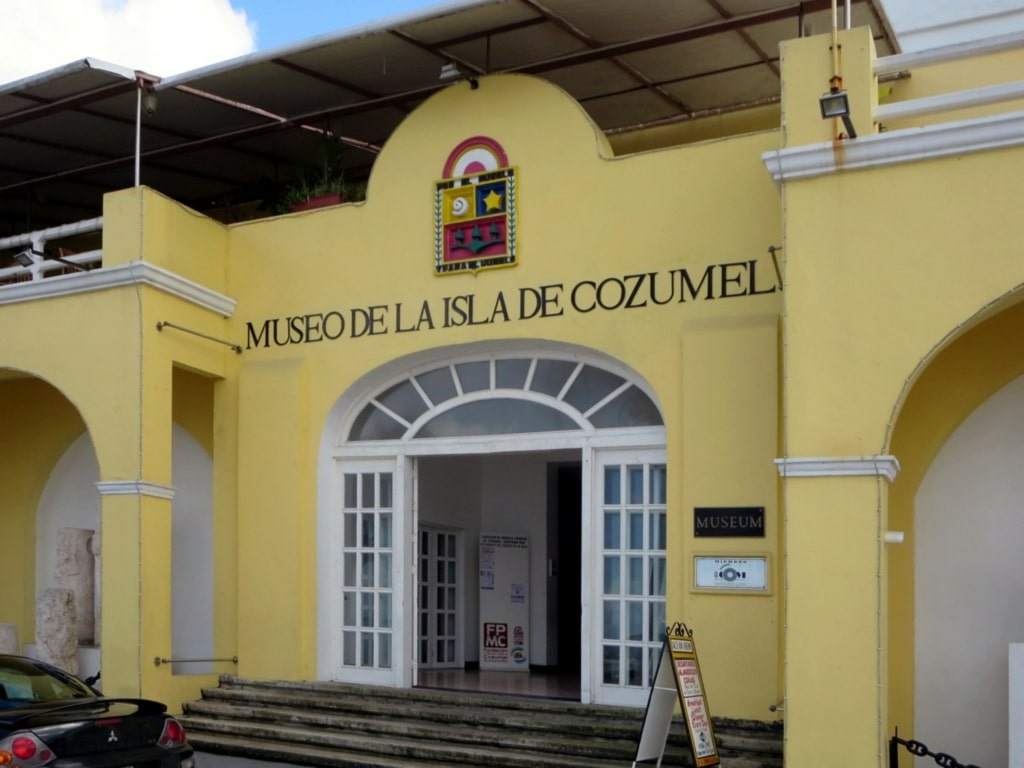
Cozumel Island Museum Photo by David Stanley on Flickr, licensed under CC BY 2.0
If visiting Cozumel sparks a desire to learn more about the island, or the Maya, this museum is essential. The building itself dates back to the 1930s when it was one of the first hotels on the island.
Exhibitions deal with everything from geology to the local Carnaval tradition. Among the 11 interactive exhibits are those dealing with the coming of the Spanish, and exploring the island’s culture.
A recreated Maya Temple will bring to life some of the dusty ruins you may have seen elsewhere. Surprisingly entertaining, this alone should be on everyone’s itinerary to better understand the Maya.
Spot Rare Birds
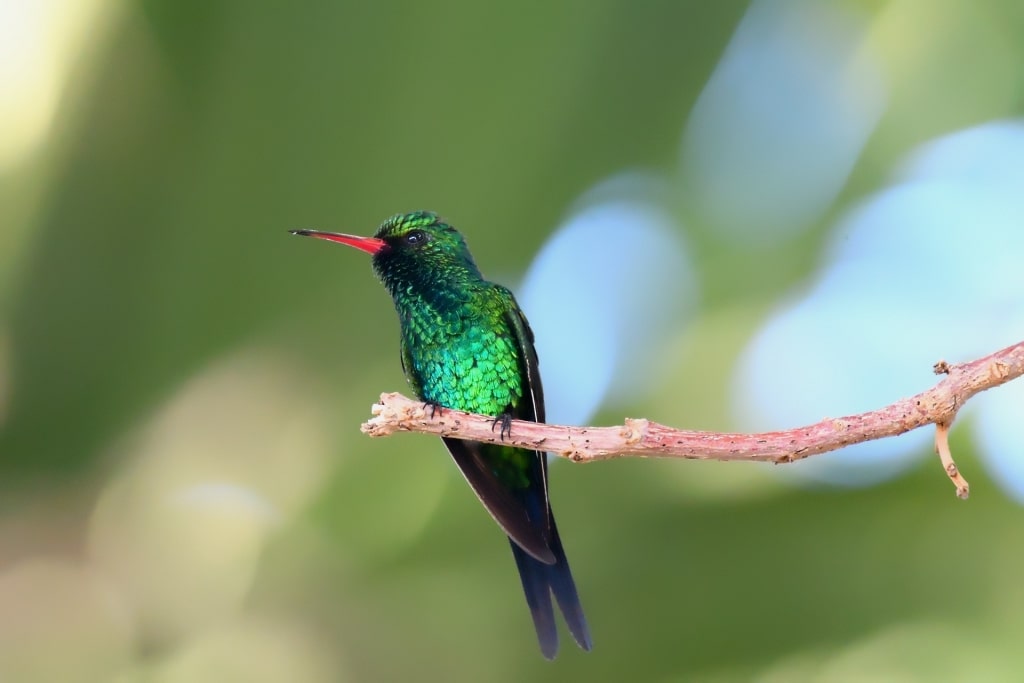
Cozumel emerald
Cozumel means “Island of the Swallows” in Mayan, so it’s perhaps no surprise that it’s a birdlife hotspot. There are around 20 species or subspecies endemic to the island, and some 340 in total to spot.
First stop should be the Cozumel Country Club, where the golf course is certified as an Audubon Cooperative Sanctuary. The coastal mangrove swamps, and the island’s tropical deciduous forest are also refuges for many species.
Although you will spot many birds as you walk or drive around Cozumel, you will also find several good birdwatching tours. As well as popular ones at Cozumel Country Club, and El Cedral, there are a number that visit several different sites so you can see a wider variety of species.
Some birds will be very familiar to North American visitors as they too migrate here for the winter. The migratory birds, many of which are aquatic, are therefore best seen from November to April.
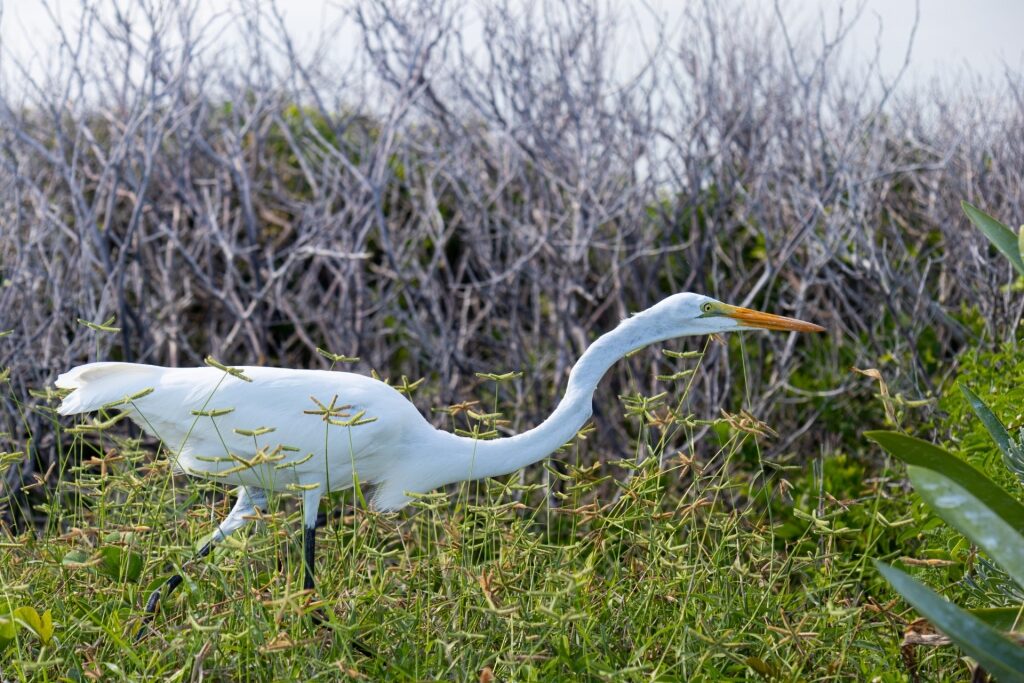
Great egret
However, you’ll see plenty of permanent residents throughout the year, including the black-bellied whistling duck, great egret, white ibis, and black vulture. Endemics include the Cozumel emerald, Yucatan jay, and orange oriole.
Other highlights among many might include the roseate spoonbill, belted kingfisher, white-fronted parrot, great blue heron, yellow warbler, and Yucatan vireo. One songbird it would be difficult to leave Cozumel without having heard, if not seen, is the very common tropical mockingbird.
Go Deep-Sea Fishing
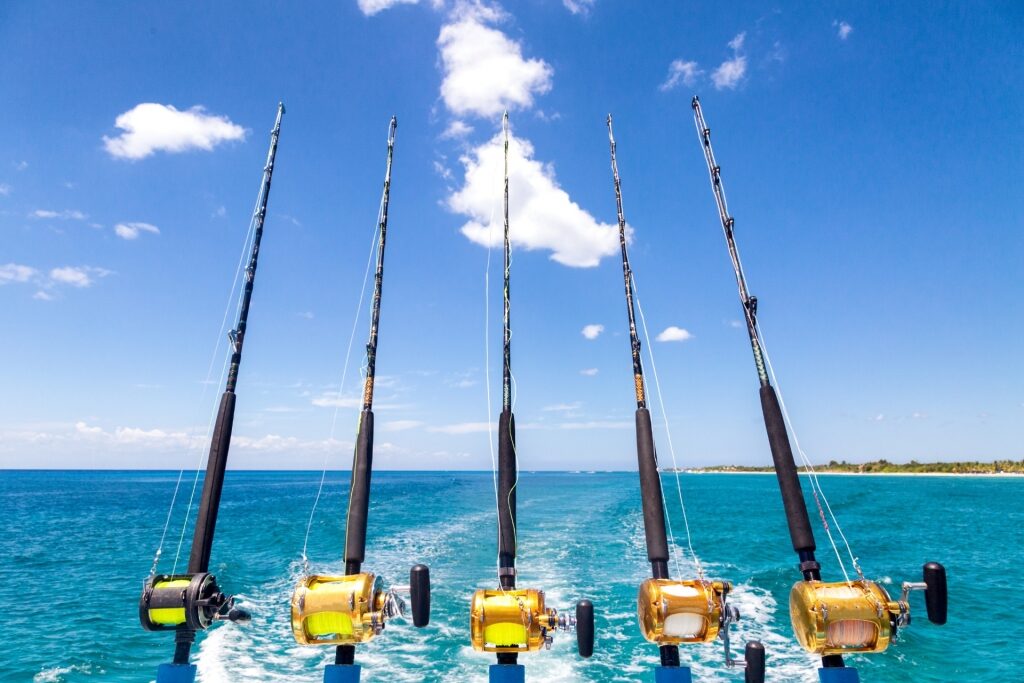
Fishing in Cozumel
You can go deep-sea fishing at any time of the year in Cozumel. It’s an exciting sport, with options for trolling (from a moving boat) or bottom fishing (with a stationary boat).
For most visitors, coming from September through March, the common species to target are bottom feeders such as grouper, yellowtail snapper, and other reef fish, most of which make good eating.
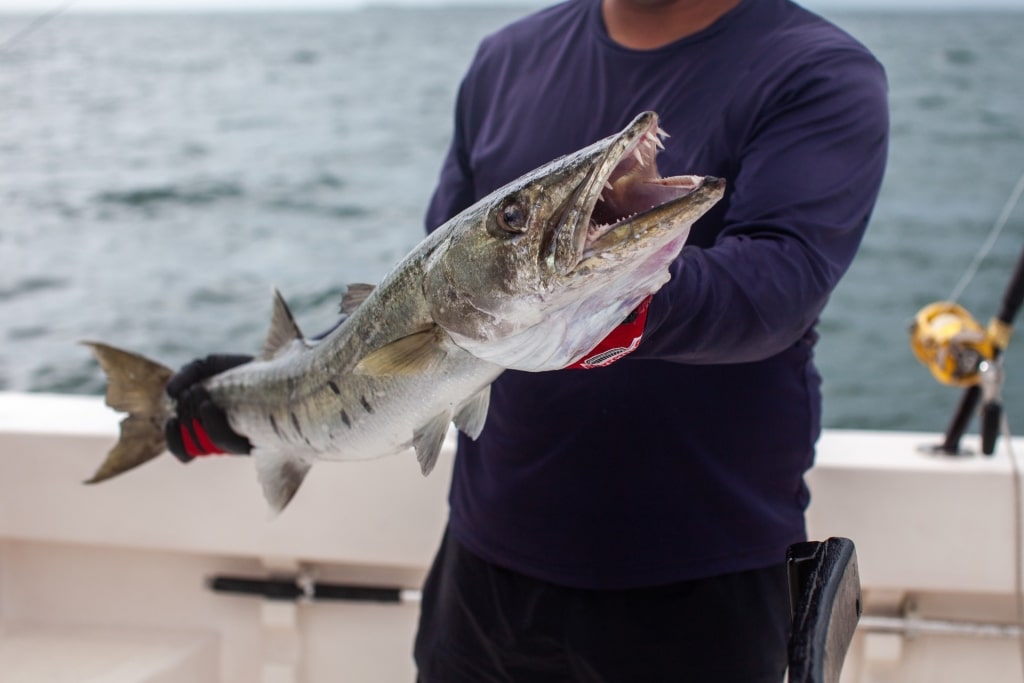
Barracuda
Barracuda are easily caught all year round, but other sportfish such as bonito, mahi mahi, blue marlin, or sailfish are best landed between March and August. However, you might be lucky on any day of the year, and charters will revert to bottom-fishing if the bigger guys are not biting.
Either way, you’re guaranteed a good day out on the sea, with every chance of catching something. The limit is ten fish per angler a day, but your skipper will guide you through the small print on that.
See the Clifftop Splendor of Tulum
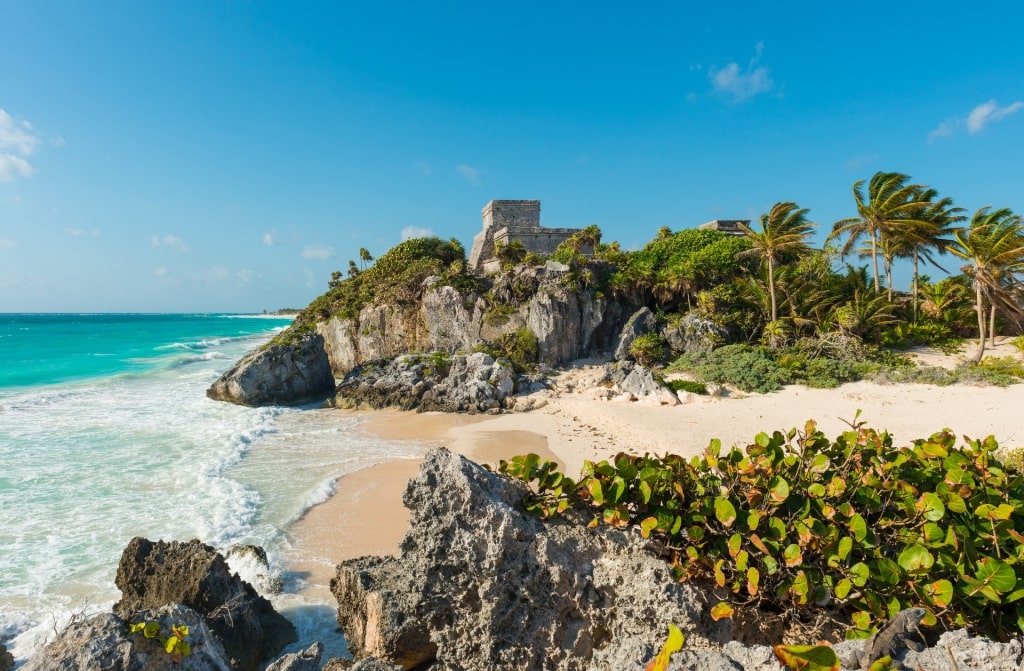
Tulum
The Maya/Toltec site of Tulum must be one of the most photogenic archaeological sites in the world. Sitting on a sheer cliff, overlooking the clear blue Caribbean sea, it’s a familiar poster child for Mexico tourism.
The reality does not disappoint, starting with the massive defensive wall. The most prominent structure is the Castillo (Castle), a temple pyramid whose architecture shows its origins in the Toltec civilization.
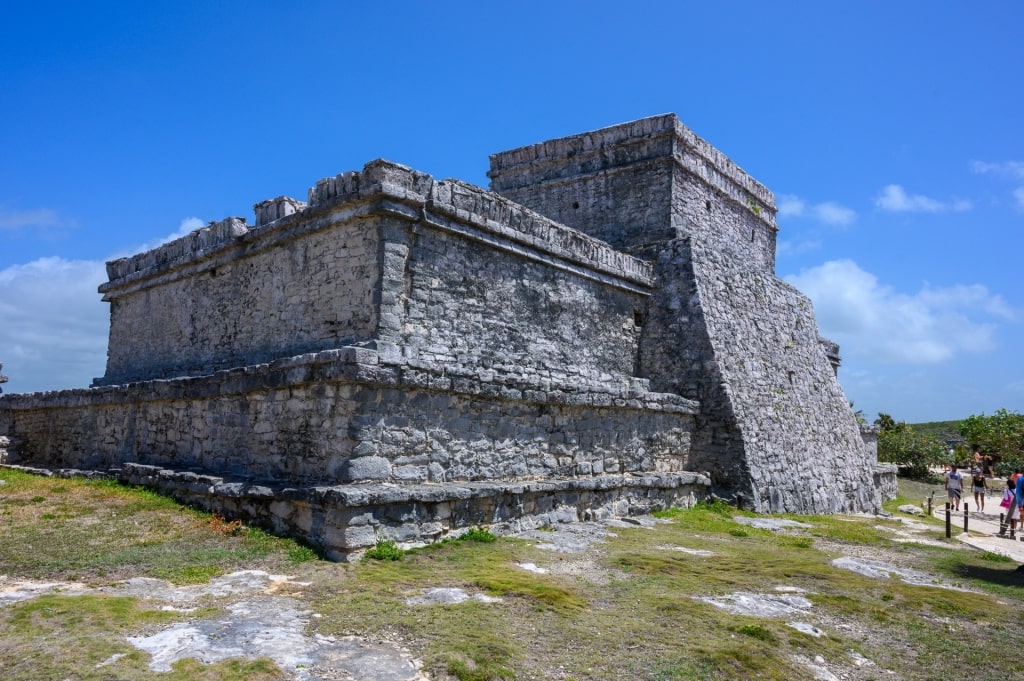
Tulum
The ancient port city, abandoned in the late 1500s, is a complex of ruins that a good guide will bring to life. It served the inland city of Coba, and dates to around 600 CE but reached its height from 1200 onward.
You can easily join a tour from Cozumel. Tulum is Mexico’s most-visited archeological site after Teotihuacan outside Mexico City, and Chichen Itza.
Be Arty in San Miguel
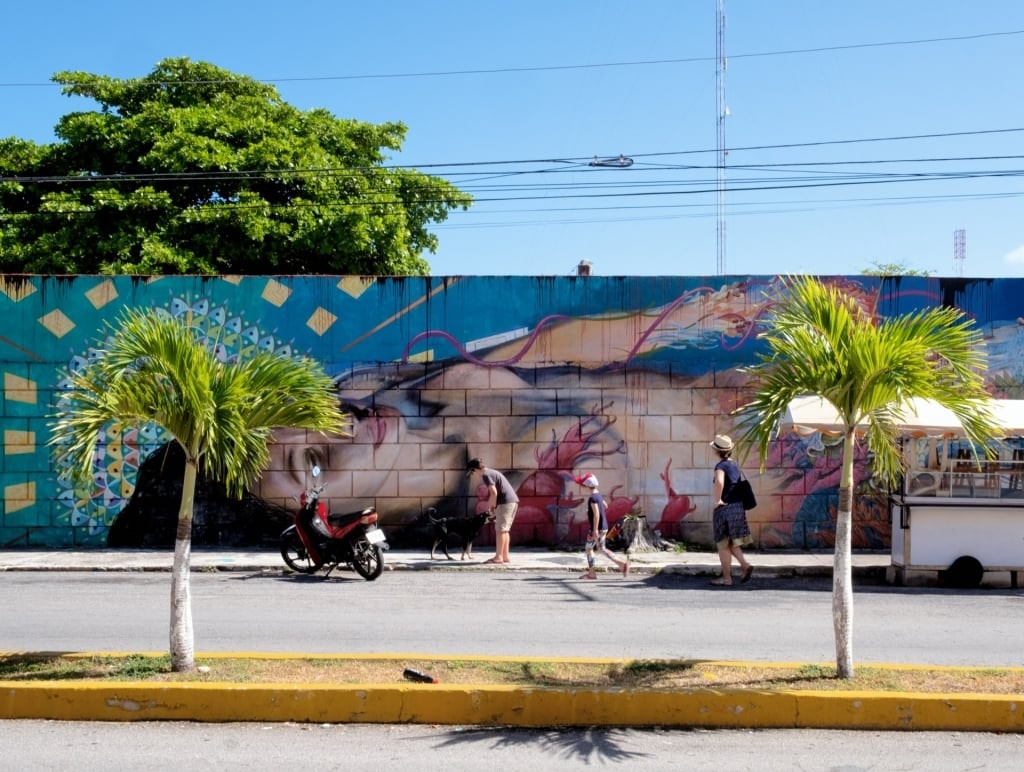
Street art in San Miguel Photo by Lars Plougmann on Flickr, licensed under CC BY-SA 2.0
Cozumel’s crafts showcase the talent of the artisans who produce beautiful objects in silver, cotton or even papier-mâché. You’ll also find many art galleries in San Miguel, and indeed elsewhere on Cozumel, that highlight the work of less traditional artists.
Keep an eye out, too, for the many murals that decorate walls and buildings throughout the town. You’ll notice a common theme of conservation in 50 large works created by a multinational project called “Sea Walls: Artists for Oceans”.
Leading street artists are among those from around the world who have contributed to the project. Murals are always subject to change, but two to look out for include “Letanía” (“Litany”) by Mexican artist Secreto Rebollo, and “Mapache’s Stare” by South Africa’s Sonny, which highlights the plight of the endangered Cozumel raccoon.
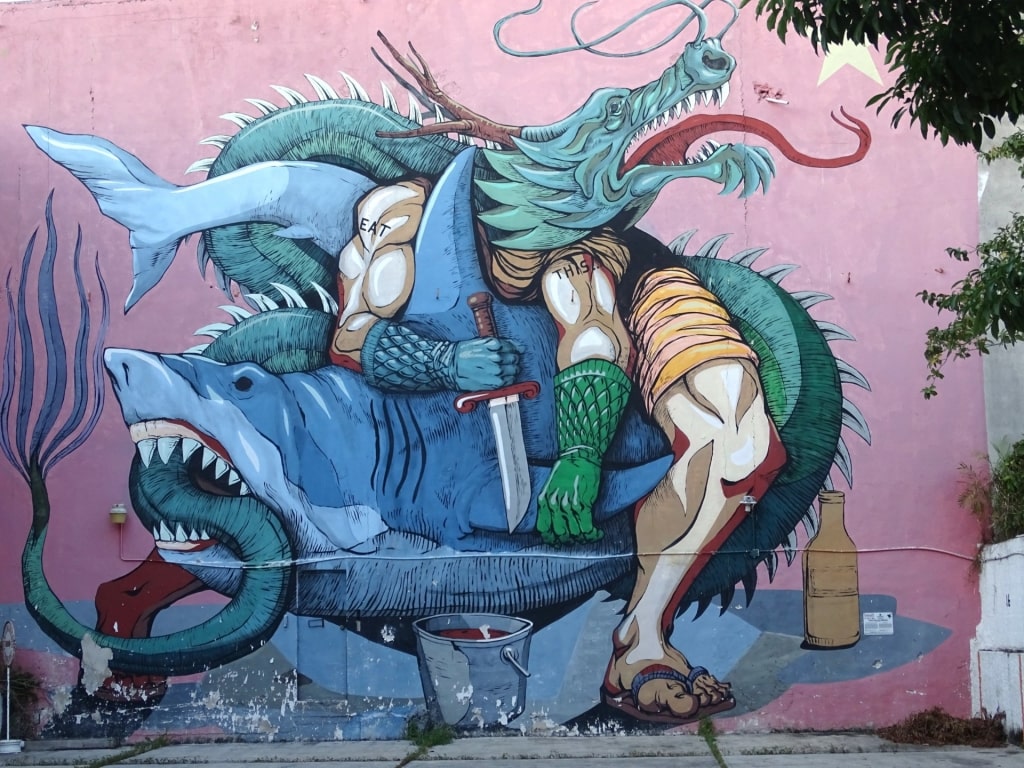
Street art in San Miguel Photo by Adam Jones on Flickr, licensed under CC BY 2.0
The murals range from those on block-long walls to others covering the entire side of a two-story building. Most are around the downtown area, but you’ll find some in surprising locations.
Go Bats in the Jade Cavern
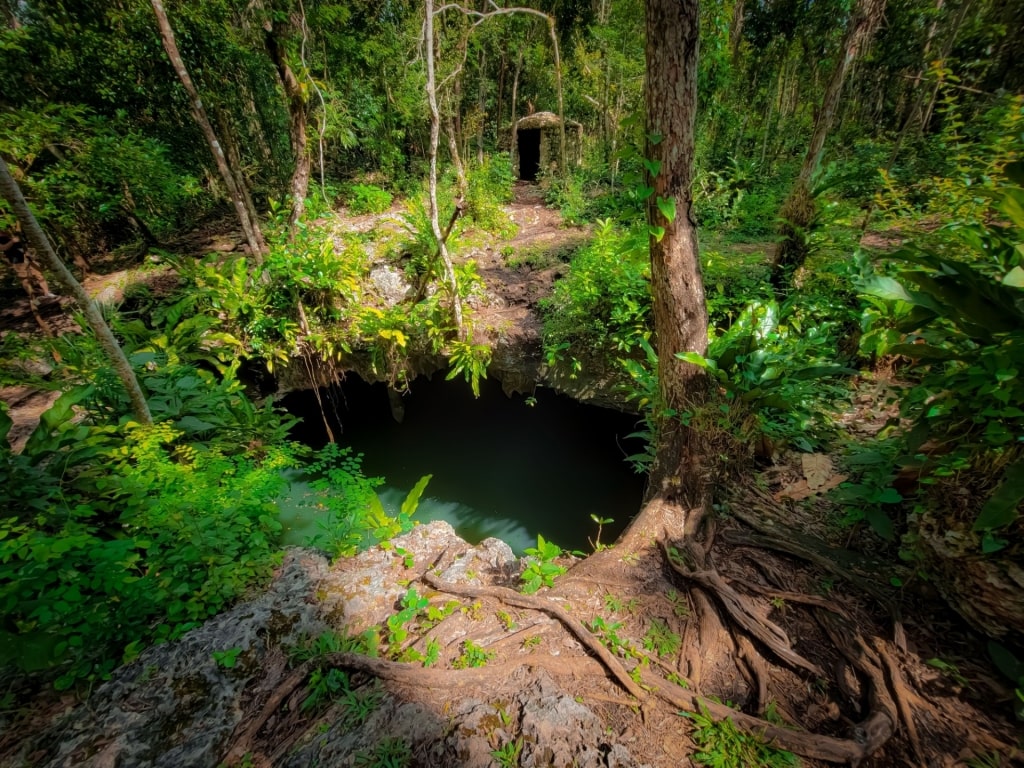
Jade Cavern
Reaching the Jade Cavern, deep within Cozumel’s jungle, is an adventure in itself. Tours take four-wheel-drive wheels or quad bikes to tackle the thrilling dirt roads.
The cave is eroded into the limestone rocks underlying the island. It takes its name from the green light filtering through the jungle canopy, and minerals in the water.
Any visitor to Yucatan will be familiar with its many cenotes, underground caves filled with rainwater. The Jade Cavern stands out for its population of biodiverse inhabitants, which range from blue crabs to bats.
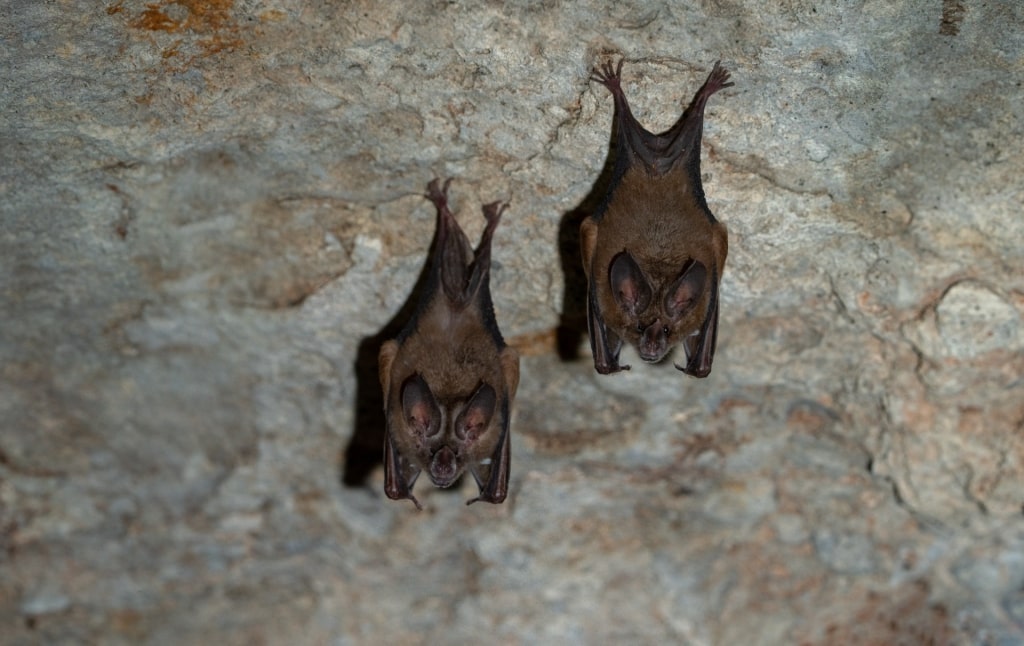
Bats
The bat colony adds a strong sulfur smell to the cavern, which you need to be prepared for if you go swimming. Not everyone finds these remarkable Caribbean animals enchanting, but those who do will enjoy learning more about them.
A 30-minute drive from San Miguel, Jade Cavern is a very different side of Cozumel. Most tours will add fun extras such as a tequila tasting, if they are not self-drive.
Be Awed by Paradise Reef
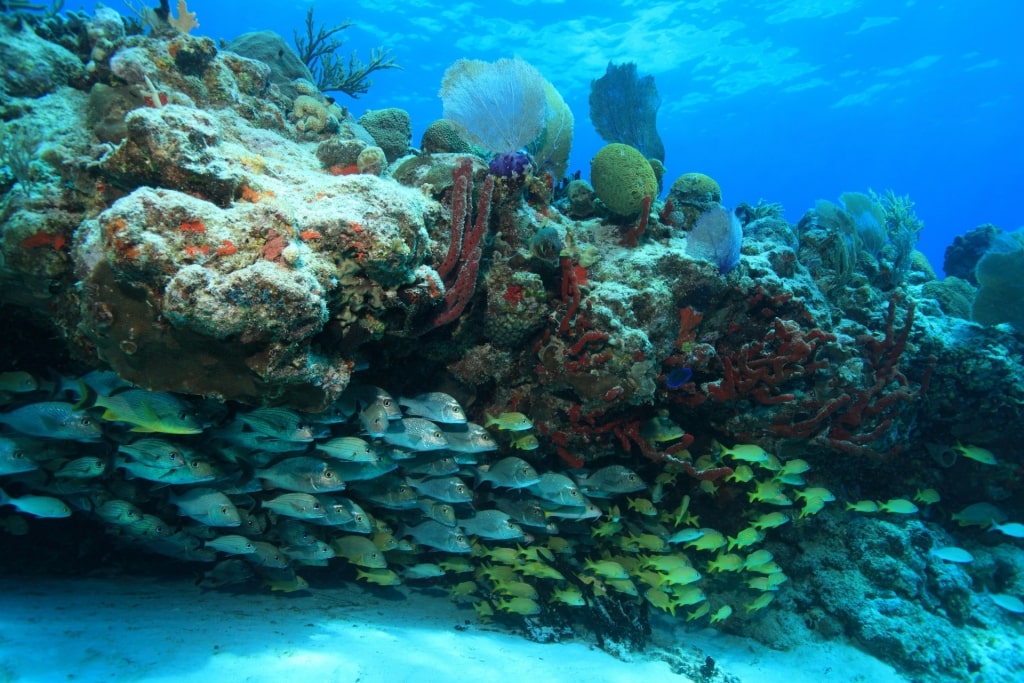
Paradise Reef
Strong currents make this a tricky reef best explored on a tour or with a guide. The reward is one of the best reefs on Cozumel, either for divers or snorkelers.
Snorkelers can easily drift with the current, taking in the many shoals of fish. Grunts, sergeant majors, snappers, trumpetfish, and queen angelfish are among the species to be seen.
Novice snorkelers will stick to the shallower northern part of the reef. South Paradise goes down to 30 feet and is for the more experienced.
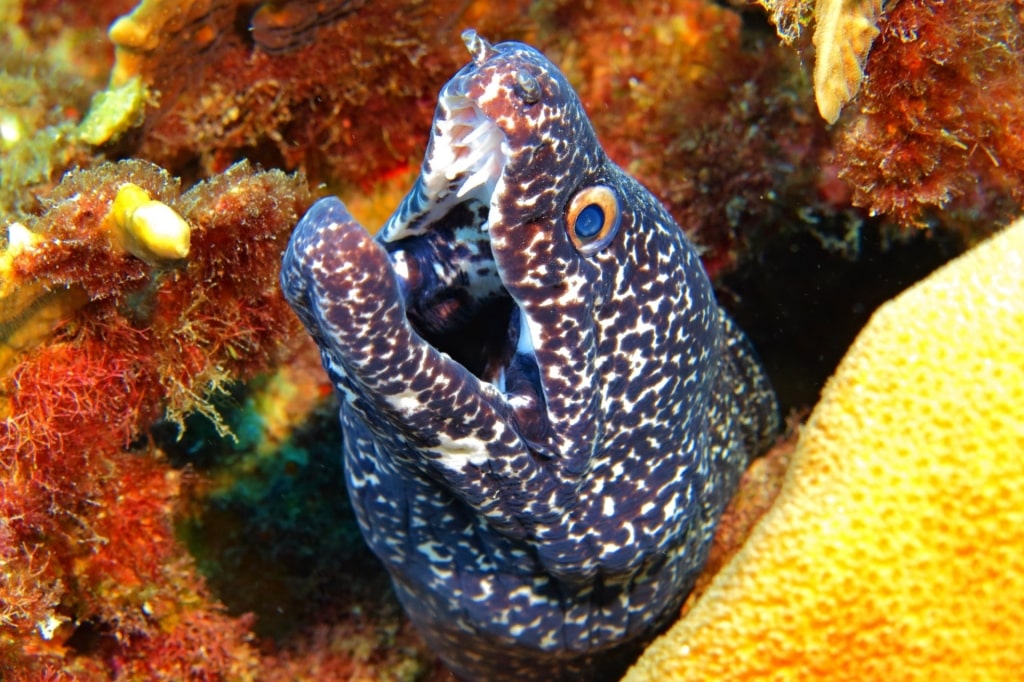
Spotted moray eel
The reef is also perfect for novice divers who will be closer to details such as the exquisite anemones, or sponges. In deeper waters, you’ll see barracuda, spotted moray eels, or even lobster.
In areas of sand, you may be lucky enough to encounter stingrays or seahorses. Of course, the reef is also rich in massive stands of coral, and beds of seagrass.
Take a Ferry to Playa del Carmen
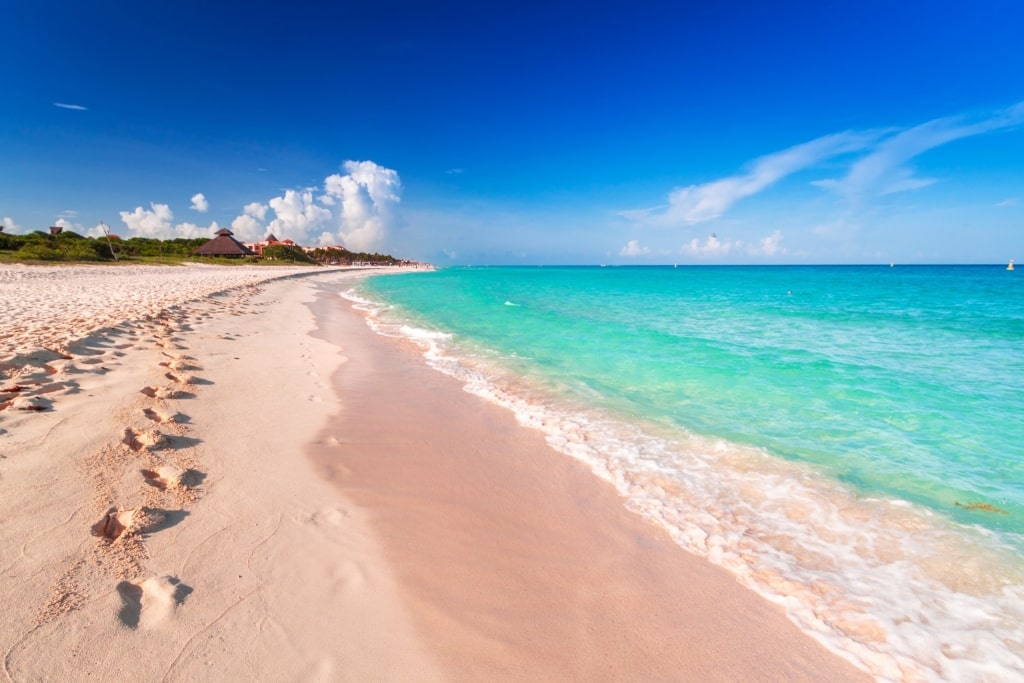
Playa del Carmen
With dozens of ferry crossings a day, taking just 30 mins each way, it’s easy to visit Playa del Carmen from Cozumel. The busy town is a great place to see some of the best beaches in Riviera Maya.
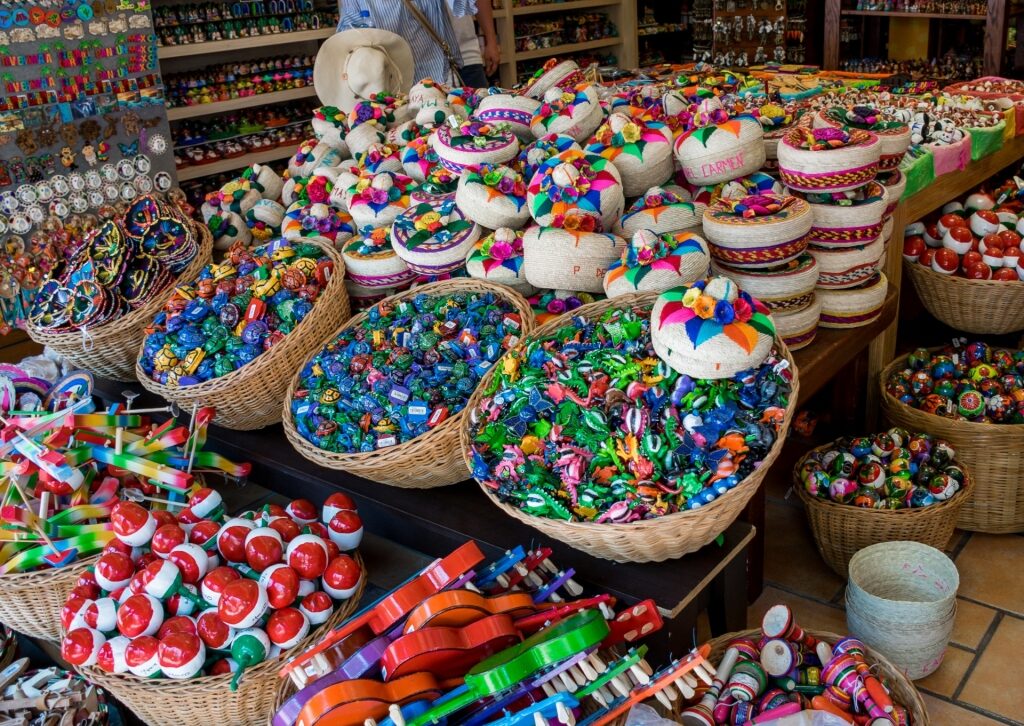
Shop in Quinta Avenida, Playa del Carmen
At its heart is the pedestrianized shopping street of Quinta Avenida (5th Avenue). Lined with fashion boutiques, shops, restaurants, and cafés, it’s always busy.
However, the town rose to fame for its perfect white sand beaches, crystal-clear water, and sunny weather. You’ll find plenty of places to relax in the sun, and swim, snorkel or paddle board.
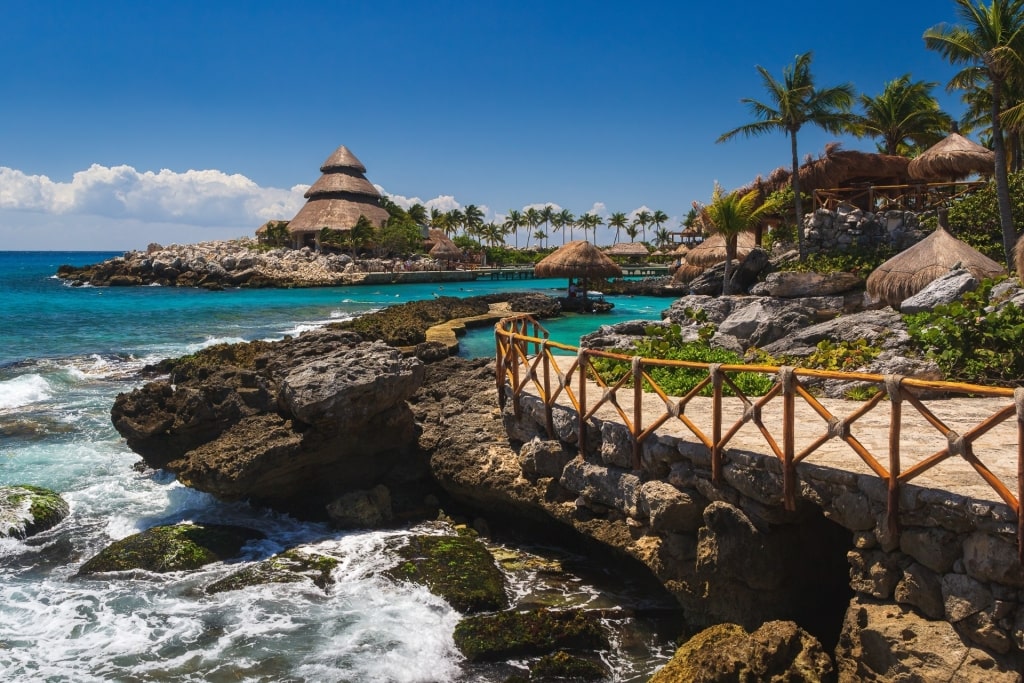
Xcaret, Playa del Carmen
Nearby is the “eco-archaeological” park of Xcaret, where you can swim in a cenote, watch a Maya cultural show, or enjoy one of the best water parks in the Caribbean. There’s also an Aviary, Butterfly Pavilion, and Aquarium to see.
Only four miles south of “Playa” is the Xplor Park, which is aimed at the more adventurous. It has a world-class zip-lining experience, and you can also try off-road driving, or river rafting among many other activities.
Experience the Delights of El Cedral
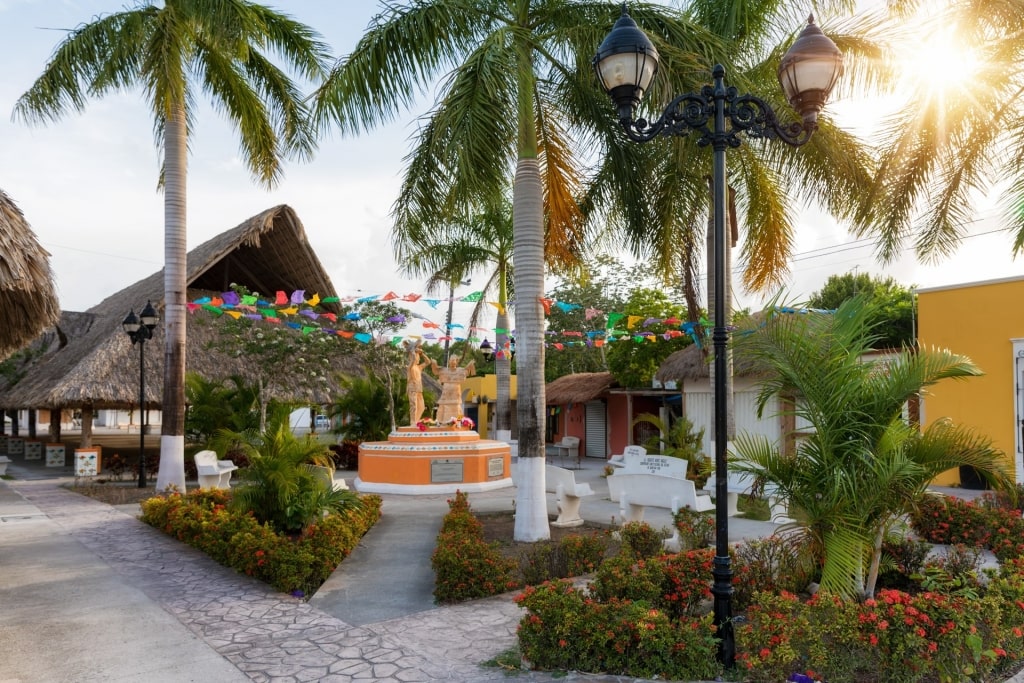
El Cedral
The small town of El Cedral, in the southwest of Cozumel, is a quiet escape from some of the busier parts of the island. It has picturesque Maya ruins, dating to 800 CE, and the first Spanish colonial-era church on the island.
The town’s tiny plaza is a focal point for an abundance of craft shops and restaurants. These latter are notable for their authentic Mexican, and Yucatan cuisine.
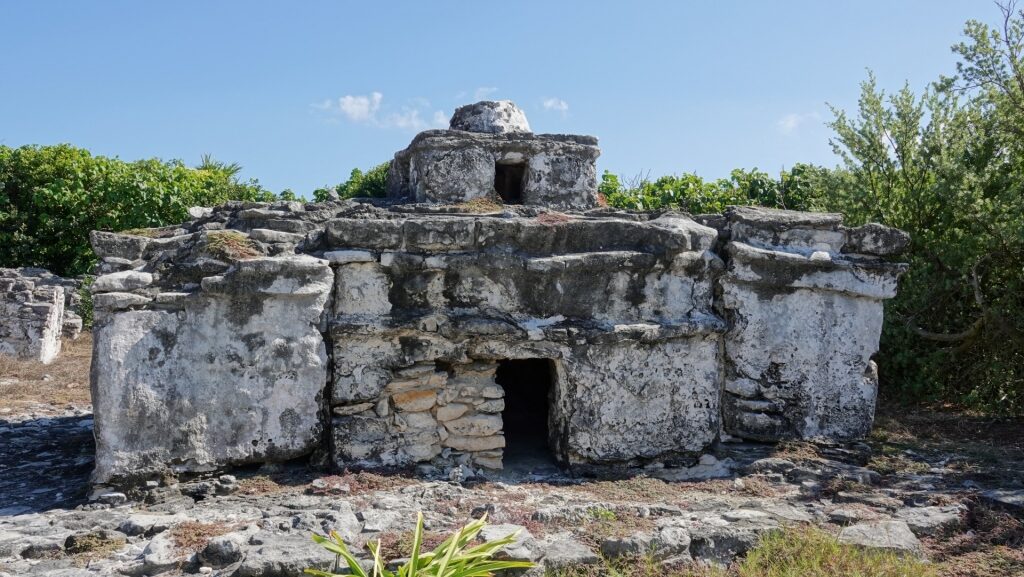
Mayan ruins in El Cedral
Four-wheel drive trips to explore the surrounding jungle are popular. Another option is a horseback ride to admire the Maya ruins while experiencing the sights, and sounds of the forest.
Nearby is Kun Che Park, where you can watch Maya dances, and learn about their ceremonies, as well as cooking. You can also watch the highly skilled Maya Ball game being played.
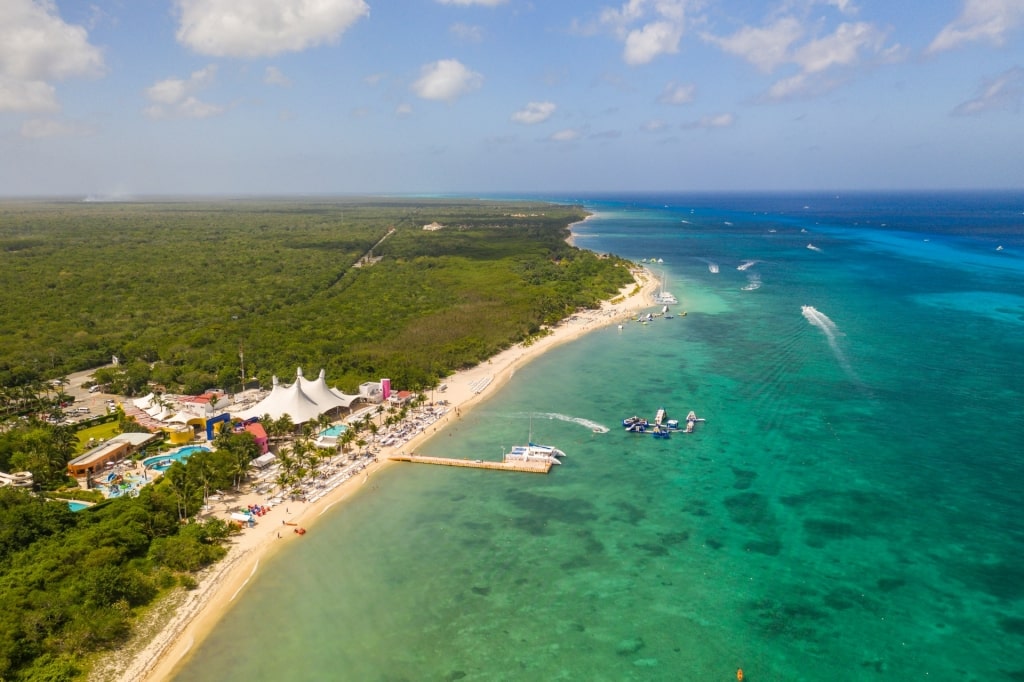
Playa Mia Grand Beach Park
Ready to explore this enchanting island? Browse our luxury cruises to Cozumel and plan your dream vacation.
